Matador Network's Blog, page 153
June 26, 2024
14 Stunning Airbnbs in Sicily That Will Take Your Breath Away

Off the toe of Italy’s boot, Sicily is one of the most naturally beautiful regions of the country and one of the most culturally diverse places in Europe. The island’s architecture, language, cuisine, and cultural traditions have been influenced by many civilizations over the centuries, including the Phoenicians, Greeks, Arabs, Normans, Romans, and British. Sicily is — to put it simply — a very special place. From world-class vineyards built on volcanic soil, and pretty fishing villages which are still traditionally operated, to seasonal farm-to-table restaurants, there’s a lot to enjoy on vacation here. There’s also a superb range of Airbnb Sicily rentals. Peppered across the island there are one-of-a-kind Airbnb properties that will take your breath away — here are some of the best.
Taking a European trip? Check out Matador’s accommodation guides to the best places to stay:The 11 dreamiest Airbnbs in ItalyThese dreamy Amalfi Coast Airbnbs are the perfect seaside escapeThese Greek Villas Make for a Unique and Cozy Stay in Athens9 dreamy Airbnbs in the Greek islands9 dreamiest Airbnbs in the South of FranceThe most beautiful Airbnbs in ParisThese Airbnbs make you feel like you’re living in Game of ThronesStay like royalty at these Airbnb Ireland castle rentals
We hope you love the Airbnb Sicily rentals we recommend! Just so you know, Matador may collect a small commission from the links on this page if you decide to book a stay. Listed prices are accurate as of the time of publication.
Four-bedroom apartment in the historic center of Palermo Photo: Airbnb
Photo: Airbnb Photo: Airbnb
Photo: Airbnb Photo: Airbnb
Photo: AirbnbIf you’re wanting to stay in Palermo for a few days or base yourself there for your vacation, this group-sized Airbnb is fitting. It’s situated on one of the oldest streets in the city, Il Cassaro. The street dates back to the late 16th century and is a great place to start a walking tour of Palermo to explore the many historical monuments, churches, bars, street food vendors, museums, and other must-see sights.
The recently renovated apartment is set in a 17th-century building and has four bedrooms. There’s a possibility to add extra sleeping space (a double sofa bed in one bedroom, and another in the second) if needed. This can be arranged on request, so it’s worth reaching out to the owner to discuss options if you’re traveling with a large group. The rooftop terrace and other outdoor spaces that lead off bedrooms offer views of the historic neighborhood and have nice seating areas. There’s ample room in the shared living areas to accommodate a big party of guests with previous patrons raving about the spaciousness and location of this Palermo Airbnb.
Eleven guests, four bedrooms
Price: $357 per night
 Photo: Airbnb
Photo: Airbnb Photo: Airbnb
Photo: Airbnb Photo: Airbnb
Photo: AirbnbChoosing where to stay in Palermo is important. It’s not difficult to find something unique here, but to truly experience the culture and history of the remarkable city, opt for an Airbnb with character. This particularly special rental is situated in the Politeama Libertà district of Palermo. Close to many of Palermo’s most popular attractions, such as the Teatro Massimo and the Palazzo dei Normanni, this area of the city is also home to some of the best shopping, dining, and entertainment options.
The sensational Airbnb is located on the second floor of an Art Nouveau building. It’s important to note that there’s an elevator. Many apartments in Palermo are reached via narrow staircases and it’s rare to find a rental with elevator access. The entire apartment has been renovated maintaining the Art-Nouveau style of the exterior. No detail has been overlooked here and it’s clear this space has been curated with love by an artist and book lover. Iconic Sicilian tiled floors can be found throughout and design-focused furniture, stacks of books, and pretty terraces make this one of the most impressive Airbnbs in Palermo.
Six guests, three bedrooms
Price: $347 per night
 Photo: Airbnb
Photo: Airbnb Photo: Airbnb
Photo: Airbnb Photo: Airbnb
Photo: AirbnbIf you’d rather be situated in a more countryside location, but be close to the beach, this three-bedroom house near the town of Bochini is a great option. Located in the southeast of Sicily, Bochini is close to the ancient baroque town of Noto and is surrounded by sprawling natural landscapes. Noto is known for its baroque-style architecture and is renowned as one of the best-preserved old towns in Italy. This countryside retreat is also a short drive from the coast. The main beach of Lido di Noto is a particularly popular spot, with its long stretch of fine sand and shallow waters that make it perfect for families with young children.
On that note, this Airbnb is perfectly set up for a group or family. Set between olive and almond groves on the old road between Noto and Avola, the house sleeps six. There’s a recently renovated swimming pool and a lovely garden with organic fruit and vegetables that guests can harvest. The interior is authentically farm-house style and as well as the garden area there is a barbecue, a pizza oven, and an outdoor shower.
Six guests, three bedrooms
Price: $331 per night
 Photo: Airbnb
Photo: Airbnb Photo: Airbnb
Photo: Airbnb Photo: Airbnb
Photo: AirbnbOn Ortigia, a small island located off the southeastern coast of Sicily, this apartment is in the heart of La Judecca, the historic quarter close to the famous cathedral and the sea. Considered one of the most beautiful destinations in Sicily, Ortigia is a pedestrian-only island. It’s honored for its ancient Greek ruins and production of soap, candles, and fragrances made with natural ingredients like local olive oil.
This two-bedroom apartment is on one of Ortigia’s most photographed streets. The location is ideal. It’s central but housed within a residential building so it’s a quiet escape, away from loud narrow streets and nightlife. The rooftop terrace offers views of the historic tiled buildings and has a comfortable shaded seating area and a sun lounger. The interior is peppered with traditional Sicilian pottery and art, with antique wooden headboards and Art-Deco light fixtures. It’s worth noting that the stairs leading to the second floor are spiraled and are perhaps not the best for young children or those requiring easy access.
Four guests, two bedrooms
Price: $325 per night
 Photo: Airbnb
Photo: Airbnb Photo: Airbnb
Photo: Airbnb Photo: Airbnb
Photo: AirbnbImmersed in the countryside near Agrigento — home to the UNESCO World Heritage Site, Valle dei Templi (Valley of the Temples) — this two-bedroom villa is an excellent base for exploring the southern coast of Sicily. The Valle dei Templi archaeological site contains some of Sicily’s best-preserved Greek temples from antiquity including Temple Euryalus and Temple Concordia and is a must-see when visiting the island. In fact, the south of Sicily is worth considering basing your trip around. From stunning beaches of Marina di Modica, Ragusa and Marina di Ragusa, Porto Empedocle and San Leone, Realmonte and Scala dei Turchi to the historic fishing port town of Sciacca there’s a lot to explore. Hiring a car in Sicily should be considered because the island is small enough for a one or two-week road trip. You can start in Palermo and then tour the coastal regions.
This traditional villa is set on 10 hectares of olive and citrus groves and has a large swimming pool with a diving board, plenty of outdoor seating, and shaded areas to relax in the warmer summer months. The interior decor is charming, with Sicilian tiles, dark wood slatted shutters, terracotta flooring, and plenty of quiet reading nooks.
Four guests, two bedrooms
Price: $325 per night
 Photo: Airbnb
Photo: Airbnb Photo: Airbnb
Photo: Airbnb Photo: Airbnb
Photo: AirbnbThis private villa is meters away from the ocean in the borough of Mondello just outside Palermo. Mondello beach is a popular with locals and visitors looking to escape the city. Particularly during the summer months, Mondello’s stretch of fine white sand and shallow electric blue waters offer respite from the busy narrow streets of the capital and the heat. Due to its proximity to the airport and transport links, the old historic fishing port, and the surrounding coastal area are superb places to look for an Airbnb.
This Airbnb Plus is one to bookmark. It’s close to the famous beach and a superb transport link to Palermo. What makes this rental stand out is its proximity to the beach, shops, and the village center, but it’s situated on a quiet side street where, even in summer, guests are promised a peaceful stay. The ambiance of tranquility filters through the house too. White decor with accents of baby blue and stunning French windows make the two-bedroom feel airy and light. The garden is an added haven. With perfectly manicured lawns, a sprawling patio with ample seating, and an outdoor hot and cold shower, this Airbnb, inside and out, ticks all the boxes.
Four guests, two bedrooms
Price: $217 per night
 Photo: Airbnb
Photo: Airbnb Photo: Airbnb
Photo: Airbnb Photo: Airbnb
Photo: AirbnbAnother Airbnb Plus, this seafront home looks out over the ocean in the small village of Stazzo on the eastern coast of the island. Stazzo is known for its stunning black sand beaches, rocky coves, and breathtaking views of the Mediterranean Sea. It’s also close to the coastal city of Acireale which sits at the foot of Mount Etna. If traveling in spring, the cultural event of Carnevale di Acireale draws people to the region. The February celebration is one of Sicily’s most spectacular cultural events and one of the largest and most frequented carnivals in Italy.
This flagstoned three-floor terrace is an ideal place to base yourself in eastern Sicily. It’s a stone’s throw away from the sea and comfortably sleeps a group of six. The interior is impressive with bright, fresh, well-furnished bedrooms — the attic room has vaulted wood ceilings — and a large living room, a dining room, and a well-equipped kitchen with an adjoining terrace.
Six guests, four bedrooms
Price: $195 per night
 Photo: Airbnb
Photo: Airbnb Photo: Airbnb
Photo: Airbnb Photo: Airbnb
Photo: Airbnb Photo: Airbnb
Photo: AirbnbSee more photosThis epic villa sits on the rocks in Solanto, a charming coastal town on the northern shore just outside Palermo. It’s a great base if you’d like to be close to the city but on the water. Solanto is well known for its medieval castle, Castello San Marco, which sits atop a rocky outcrop overlooking the town and offers panoramic views of the ocean. From Solanto, you can reach Palermo city center in around 40 minutes, and the Airbnb has a parking space. Sicily isn’t big, so hiring a car and making some day trips is an excellent idea (if you’re brave enough to take on the Sicilian road rules.) The historic villa has been fully renovated and has a sprawling terrace over the rocky coastline. A Guest Favorite Airbnb with five-star reviews, this is one to bookmark.
Eight guests, two bedrooms
Price: $641 per night
 Photo: Airbnb
Photo: Airbnb Photo: Airbnb
Photo: Airbnb Photo: Airbnb
Photo: Airbnb Photo: AirbnbSee more photosAnother option in Solanto is this design-focused house, which is a bit more modern and has direct access to the Mediterranean. The house, a fusion of contemporary design and traditional Sicilian touches, has four double bedrooms and three bathrooms. The outdoor space is jaw-dropping. The large terrace overlooks the ocean. Furnished with comfortable sofas, chaise longues, tables, and chairs, this terrace is an extension of the living area, perfect for al fresco dining while enjoying the ever-changing colors of the sea. A staircase leads directly from the terrace to a platform built on the rocks, providing a perfect spot for sunbathing or diving into the water. Or, if you’d prefer, there’s a stunning swimming pool where you can take in the Sicilian sunset. Near the rental, you’ll find a nautical club to rent motor boats, snorkeling, and dive gear.
Photo: AirbnbSee more photosAnother option in Solanto is this design-focused house, which is a bit more modern and has direct access to the Mediterranean. The house, a fusion of contemporary design and traditional Sicilian touches, has four double bedrooms and three bathrooms. The outdoor space is jaw-dropping. The large terrace overlooks the ocean. Furnished with comfortable sofas, chaise longues, tables, and chairs, this terrace is an extension of the living area, perfect for al fresco dining while enjoying the ever-changing colors of the sea. A staircase leads directly from the terrace to a platform built on the rocks, providing a perfect spot for sunbathing or diving into the water. Or, if you’d prefer, there’s a stunning swimming pool where you can take in the Sicilian sunset. Near the rental, you’ll find a nautical club to rent motor boats, snorkeling, and dive gear.
Eight guests, four bedrooms
Price: $1,443 per night
 Photo: Airbnb
Photo: Airbnb Photo: Airbnb
Photo: Airbnb Photo: Airbnb
Photo: Airbnb Photo: AirbnbSee more photosThis penthouse is on Ortygia Island, the heart of Syracuse. Syracuse is the only city on the Ionian coast of Sicily. Despite the central location of the rental, past guests rave about the tranquil ambiance and gorgeous terrace overlooking an inner courtyard. It’s located on the second floor of a historic building dating back to the 17th century, so you’ll need to climb a flight of stairs. There are three bedrooms: the master with an en-suite bathroom with a tub and a private terrace, and two double bedrooms with a balcony.
Photo: AirbnbSee more photosThis penthouse is on Ortygia Island, the heart of Syracuse. Syracuse is the only city on the Ionian coast of Sicily. Despite the central location of the rental, past guests rave about the tranquil ambiance and gorgeous terrace overlooking an inner courtyard. It’s located on the second floor of a historic building dating back to the 17th century, so you’ll need to climb a flight of stairs. There are three bedrooms: the master with an en-suite bathroom with a tub and a private terrace, and two double bedrooms with a balcony.
Six guests, three bedrooms
Price: $769 per night
 Photo: Airbnb
Photo: Airbnb Photo: Airbnb
Photo: Airbnb Photo: Airbnb
Photo: Airbnb Photo: AirbnbSee more photosThis apartment offers stunning views of the eastern coast. It’s situated just over a mile from the resort town of Taormina, which is quite small, so come peak season, it can feel crowded. That’s why you need to find an Airbnb retreat with a pool. A space where you can enjoy the spectacular views in peace. This two-bedroom is within a luxury residential complex with a shared swimming pool, well-kept garden, and private parking. Check-in is professionally managed by multilingual staff who can advise you about the area, what to do, and, most importantly, where to eat.
Photo: AirbnbSee more photosThis apartment offers stunning views of the eastern coast. It’s situated just over a mile from the resort town of Taormina, which is quite small, so come peak season, it can feel crowded. That’s why you need to find an Airbnb retreat with a pool. A space where you can enjoy the spectacular views in peace. This two-bedroom is within a luxury residential complex with a shared swimming pool, well-kept garden, and private parking. Check-in is professionally managed by multilingual staff who can advise you about the area, what to do, and, most importantly, where to eat.
Four guests, two bedrooms
Price: $855 per night
 Photo: Airbnb
Photo: Airbnb Photo: Airbnb
Photo: Airbnb Photo: Airbnb
Photo: Airbnb Photo: AirbnbSee more photosLocated outside Noto (another UNESCO World Heritage Site nicknamed “The Capital of Baroque,”) this three-bedroom villa is set amidst an olive grove, offering a tranquil escape just 10 minutes from the city. It has breathtaking views of the rolling hills and the Mediterranean Sea in the distance. The villa has a light and airy ambiance with large windows that blur the lines between indoor and outdoor living. It’s an excellent option for families and groups looking for a relaxing retreat near city amenities. The outdoor area has an eco-friendly pool with a sundeck and a generous garden with a lawn area and Sicilian flora.
Photo: AirbnbSee more photosLocated outside Noto (another UNESCO World Heritage Site nicknamed “The Capital of Baroque,”) this three-bedroom villa is set amidst an olive grove, offering a tranquil escape just 10 minutes from the city. It has breathtaking views of the rolling hills and the Mediterranean Sea in the distance. The villa has a light and airy ambiance with large windows that blur the lines between indoor and outdoor living. It’s an excellent option for families and groups looking for a relaxing retreat near city amenities. The outdoor area has an eco-friendly pool with a sundeck and a generous garden with a lawn area and Sicilian flora.
Five guests, three bedrooms
Price: $679 per night
 Photo: Airbnb
Photo: Airbnb Photo: Airbnb
Photo: Airbnb Photo: Airbnb
Photo: Airbnb Photo: AirbnbSee more photosThis home is set within a cave underneath a centuries-old shepherd’s hut. Beautifully renovated to modern standards, the tiny home offers a stay you’ll remember and exceptional views over the small town of Scicli, located on the southeastern corner of Sicily. The town’s collection of late-Baroque buildings puts it on the UNESCO World Heritage Site list, and getting lost down the labyrinthine alleyways of Baroque churches, palazzos with ornate balconies, and carved doorways will keep you snapping photos around every corner. The cave house has stayed true to its origins with original stone brick walls and furnishings created by local artisans, and there’s a fabulous grotto-type swimming pool sunken into the charming terrace area.
Photo: AirbnbSee more photosThis home is set within a cave underneath a centuries-old shepherd’s hut. Beautifully renovated to modern standards, the tiny home offers a stay you’ll remember and exceptional views over the small town of Scicli, located on the southeastern corner of Sicily. The town’s collection of late-Baroque buildings puts it on the UNESCO World Heritage Site list, and getting lost down the labyrinthine alleyways of Baroque churches, palazzos with ornate balconies, and carved doorways will keep you snapping photos around every corner. The cave house has stayed true to its origins with original stone brick walls and furnishings created by local artisans, and there’s a fabulous grotto-type swimming pool sunken into the charming terrace area.
Four guests, two bedrooms
Price: $417 per night
 Photo: Airbnb
Photo: Airbnb Photo: Airbnb
Photo: Airbnb Photo: Airbnb
Photo: Airbnb Photo: AirbnbSee more photosAirbnb recently made an update to help travelers find the top one, five, and ten percent of homes worldwide, and this one is currently sitting within the first group. This trophy is awarded for overall star ratings, recent guest reviews, host communication, cancellation rates, and quality-related issues that have been reported to Airbnb.
Photo: AirbnbSee more photosAirbnb recently made an update to help travelers find the top one, five, and ten percent of homes worldwide, and this one is currently sitting within the first group. This trophy is awarded for overall star ratings, recent guest reviews, host communication, cancellation rates, and quality-related issues that have been reported to Airbnb.The villa has a prime location, far from the hustle and bustle of tourist crowds on the northern coast. It’s around 30 miles from Palermo, making day trips into the city a breeze. The nearest village is Campofelice di Roccella. Here, you can wander narrow streets lined with traditional houses, visit local shops selling fresh produce and regional specialties, and experience the warmth of Sicilian hospitality. The Airbnb has 360-degree views over the countryside, mountains, and the ocean. You can enjoy the vistas from the panoramic patio, infinity pool, and manicured grounds peppered with olive trees and Sicilian flowers. 
Twelve guests, six bedrooms
Price: $1,345 per night
June 25, 2024
Why You Shouldn’t Move to Another Open Seat on a Flight

Any Economy-Class air traveler worth their salt knows that once the “boarding complete” announcement is made, it’s time to seek out a better seat — like a neighbor-free seat or even better, a full row. I’ve personally done it multiple times on flights that had a lot of available space, including a few instances when I got to stretch across four seats and catch some Z’s while on gruelling 10-plus hour trips. But, apparently, I shouldn’t have.
I knew that self-upgrading was not allowed. Moving from a simple Economy seat to a seat that carries an extra charge or a much higher rate, such as a seat in Business, Premium Economy, or one with extra legroom, is prohibited for the obvious reason that you did not pay for it. However, I was certain that moving to an open seat of the same rate was no big deal.
But according to air travel professionals, for your safety and that of everyone else on the aircraft, everyone should stick to their assigned seat. This is especially true when flying in smaller airplanes whose balance is calculated using individual seats.
Flight attendant Hailey Way, who has worked for SkyWest Airlines and charter airline iAero Airways, explains by email that on small regional planes, moving seats is not allowed, “unless it is passenger-to-passenger seat exchange.”
“If it’s deemed safe to rearrange passenger seating on an aircraft to accommodate weight and balance, then this is done prior to takeoff,” says Way, “Passengers should obey their assigned seats from then on.”
While there is more leeway on larger aircrafts, it’s still preferable that passengers keep the seats that were assigned to them prior to boarding.
“On commercial aircraft seating is usually split into multiple areas for weight and balance, not counted by individual seats,” explains Tyler Herbert, an airline pilot in Canada. “Based on passenger counts in these areas, our load planning crew will issue a weight and balance so ideally you would have people sitting where they are counted for accuracy.”
A tried-and-tested, but not fool-proof, method to easily get a neighbor-free seat on a long flight is to book one in a row of three where the middle seat is still free but either the window or the aisle is occupied. Because nobody wants to spend an entire flight sandwiched in between two strangers, there is a good chance the seat will remain empty — unless it is a full flight, of course.
And for those who believe that passengers should not moved from their assigned seats for identification purposes in the case of a fatal accident, Way debunks the idea.
“While the manifest is taken into account for passenger record or ‘souls’ on board, the full process of identifying victims in such accidents is much more complex. So, yes it is a myth that passengers’ bodies are solely reliant on the manifest. You have to take into account personal belongings, like ID’s. Also, forensic evidence will be examined along with DNA samples collected at site. Furthermore, visual identification from relatives or other family members is another way to get more accurate identification.” 
Natty Light Is Giving Away a 10-Night ‘American EuroTrip’ to Five US Towns Named After European Destinations

There’s no denying the joys of a European vacation. There’s also no denying that the cost can be eye-opening or even put an indefinite hold on any planning — even when traveling to Europe on a budget and booking your international flight at the cheapest time. The beer brand Natural Light is hosting a promotion that puts a twist on going to Europe with a tongue-in-cheek, expenses-paid, 10-night “American EuroTrip” to five cities in the United States that “share the same name and cultural charms of some of the top European vacation destinations.”
“Vacationing to Europe’s top destinations will set you back thousands of your hard-earned US dollars, guaranteed,” the contest announcement states. “With those high costs, it better be the trip of a lifetime—but a summer in Europe where you can’t buy an ice-cold Natural Light…why even go?”
Natty Light was my go-to beer in college in Auburn, Alabama. It’s safe to say that international travel was far from what I was thinking about when cracking open a can on hot summer days. Odes to Natural Light don’t pop up as frequently as love letters to cherished craft beer brands, but when they do, they’re about as Americana as they come. It’s only fitting that the brand is centering travel across the United States.
The trip takes the idea of “travel dupes,” meaning anywhere that delivers a similar experience as a popular destination, to a new level.
Where Natural Light’s American EuroTrip goes:
Paris, TexasDublin, OhioVenice, FloridaAthens, GeorgiaHolland, MichiganAs with all travel dupes, you can’t expect to land in a place with the same name and expect the same experience. Still, these are some towns and cities that are more than worth visiting in their own right. What Dublin, Ohio, lacks in the number of centuries-old pubs and Irish folk music, it makes up for with summer food markets and gorgeous walking paths. Athens, Georgia, doesn’t have the Acropolis, but it is a music center and fun college town where bands like R.E.M. got their start. The Eiffel Tower is in Paris, but the only Eiffel Tower replica with a cowboy had on top is in Paris, Texas. Holland, Michigan, does really have an abundance of windmills.
To throw your hat in the ring to be the lucky person to go on the trip (with a guest), follow Natural Light on Instagram, X, or Facebook and comment #NattyEuroTrip and #sweepstakes on the entry post. Entrants must be 21 or older, and the contest ends at 11:59 PM ET on July 4. 
The Only Cruise Line Operating on the Hudson River Now Has Summer Trips Departing From NYC
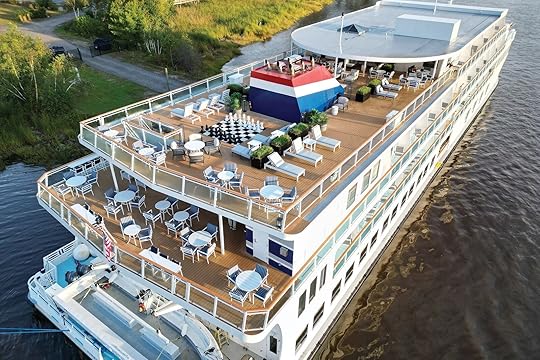
River cruises on the Danube and the Nile are undeniably appealing, but you don’t need to travel that far to enjoy a luxury river cruise among gorgeous scenery. American Cruise Lines, the largest river and small-ship cruise line in the US, offers over 50 itineraries around the country, including one that you’ll find nowhere else: an overnight cruise on the Hudson River.
American Cruise Lines’ Hudson River Summer Classic Cruise departs from New York City’s Pier 81 and follows the Hudson River all the way to Albany, stopping in Sleepy Hollow, West Point, Hyde Park, Kingston, and Catskill, before turning around to end right back where it started, in New York City. Needless to say, passengers on board this cruise get an eyeful of Manhattan’s iconic skyline and can see the Statue of Liberty in all its glory.
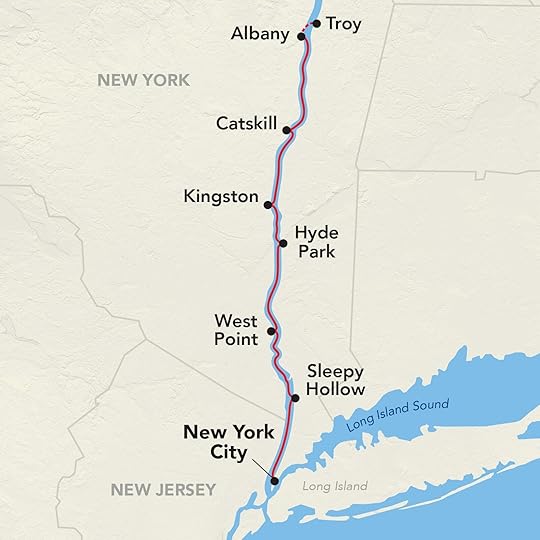
Photo: American Cruise Lines
American Cruise Lines tested out this brand new seven-night, eight-day Hudson River cruise in May and June of this year, and has scheduled 11 voyages for 2025 throughout June, July, August, September. There are also 17 sailing scheduled for 2026. The Hudson River Summer Classic Cruise starts at $6,210 per person. Passengers on board this cruise enjoy complimentary Wi-Fi, all-inclusive fine dining, and complimentary evening cocktails.
 Photo: American cruise Lines
Photo: American cruise Lines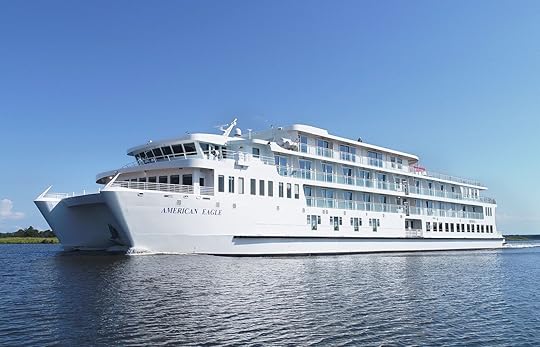 Photo: American cruise Lines
Photo: American cruise Lines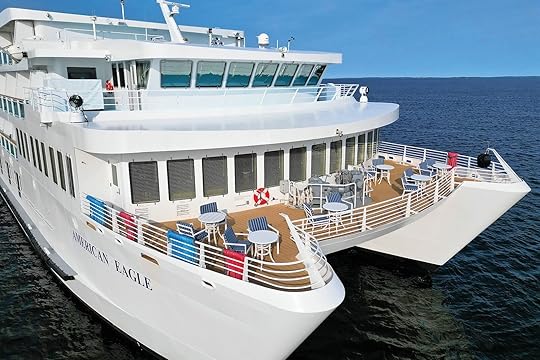 Photo: American cruise Lines
Photo: American cruise LinesAll the Hudson River Summer Classic Cruises are operated by the cruise line’s American Eagle, one of its new Coast Cat ships. Coastal Cats are luxurious adventure ships that are designed to access smaller ports while accommodating up to 100 passengers. The staterooms on board American Cruise Lines’ Coast Cats start at 300 square feet and all either have large picture windows or private balconies so that passengers don’t miss a thing. There’s also a restaurant, several lounges, a fitness center, and an outdoor café with .
The Hudson River Summer Classic Cruise is not the only overnight cruise on the Hudson River that American Cruise Lines offers. The Hudson River Fall Foliage Cruise, which follows the exact itinerary, is scheduled every year throughout September and October, and is a very popular cruise for those who wish to see the magnificent fall foliage of the region. The Hudson River Fall Foliage Cruise is operated by a variety of ships, which are not all Coastal Cats.
Earlier this year, American Cruise Lines purchased the paddlewheel steamboats from the now-defunct American Queen Voyages cruise line. There’s currently no sailings scheduled to take place on the iconic vessels. 
What I Packed for a Five-Day Caribbean Cruise
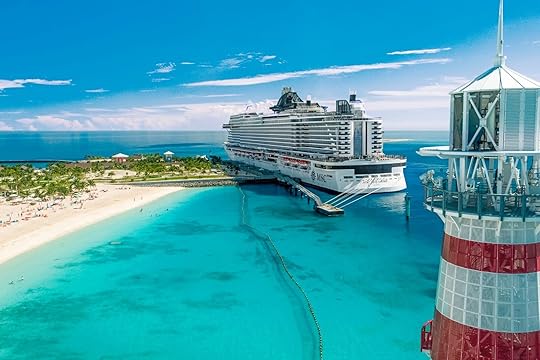
Packing for a cruise is similar to putting together a capsule wardrobe for a resort. You need the practical basics, but it should also be a fun process. This is the opportunity to shrug off your sweats and celebrate your wardrobe. No dress is too flashy; no sandal too glam. Unlike a land-based vacation, however, you must consider that shops will undoubtedly be less accessible. Sure, all mega cruises have onboard shopping, but much like airport stores, expect extortionate rates for basics like SPF and clothing stores catering to a mystery demographic with designer belts and frumpy coverups.
I recently took a five-day cruise from Miami through the Bahamas to Puerto Rico and the Dominican Republic and back to the US. This was my first time cruising with MSC as a Yacht Club guest (their premium vacation package), so I used the opportunity to treat myself to some luxe essentials.
We hope you love the Caribbean cruise packing list we recommend! Just so you know, Matador may collect a small commission from the links on this page if you decide to purchase. Listed prices are accurate as of the time of publication.
My experience on the MSC Seashore Caribbean cruise Yacht Club Members have access to the privet pool deck. Photo: MSC Cruises/Ivan Sarfatti
Yacht Club Members have access to the privet pool deck. Photo: MSC Cruises/Ivan Sarfatti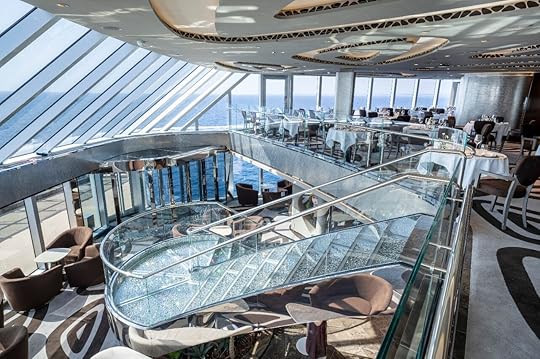 The iconic Swarovski crystal staircase leading to the Top Sail Lounge in Yacht Club. Photo: MSC Cruises/Ivan Sarfatti
The iconic Swarovski crystal staircase leading to the Top Sail Lounge in Yacht Club. Photo: MSC Cruises/Ivan Sarfatti Ocean Cay MSC Reserve is MSC's private island playground where guests can enjoy activities such as paddleboarding, kayaking, diving and a twilight lightshow. Photo: MSC Cruises/Conrad Schutt
Ocean Cay MSC Reserve is MSC's private island playground where guests can enjoy activities such as paddleboarding, kayaking, diving and a twilight lightshow. Photo: MSC Cruises/Conrad Schutt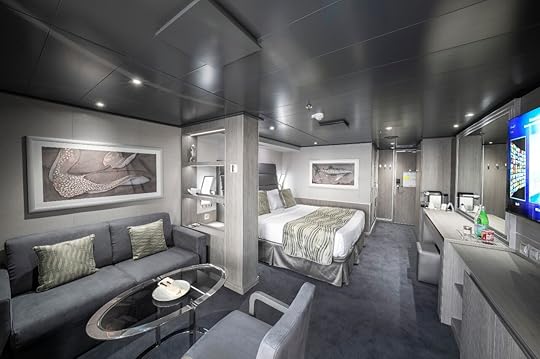 The specious Yacht Club suite. Photo: MSC Cruises/Ivan Sarfatti
The specious Yacht Club suite. Photo: MSC Cruises/Ivan SarfattiMSC Yacht Club feels more like a luxury boutique hotel rather than a mega-cruise ship. It launched in 2008 on over half the company’s fleet and offers guests a more elevated cruising experience with five-star suites, an exclusive pool deck, restaurant and cocktail bar, priority check-in and out, ushered excursions, access to the pools and saunas in the spa area, and a private butler and personal concierge. Tickets also include 24-hour room service (although the menu is extensive, you can order anything you want) and a premium drinks package that includes high-end cocktails and wine.
You will want to have a few smart items when packing for Yacht Club. Dining is formal. But although there will be those at cocktail hour in their freshly pressed, tucked-in finest, I could still show a little of my personality, which is very much dressed-down chic. For this, I opted for neutral shift dresses, high-waisted shorts, and linen cropped t-shirts coupled with chunky gold jewelry and a splash of color with my shoes and clutch. I carefully considered cabin space, choosing items (especially skirts and dressy shorts) that I could mix and match and wear on more than one occasion. I also invested in several skincare products, a moisturizing spray, and a lovely SPF. As I said, you must ensure you have the basics, especially regarding toiletries.
Here’s a selection of my favorite things on my Caribbean cruise packing list, which will be in my suitcase for warm-weather cruises to come.
What I packed for a five day Caribbean cruiseKurt Geiger sandelsView this post on InstagramA post shared by Kurt Geiger (@kurtgeiger)
My Kurt Geiger sandals (one pair in patent leather bubble gum pink and these rainbow slip-ons) are unforgivingly loud and playful. They get a mixed response, but I adore that about them. To me, the range screams luxury cruise. Both have the iconic gold signature eagle head, which is supposed to represent strength and courage — perhaps you need a little of that to proudly strut the pool area in the colorful collection. Other than the design aesthetic, these can be thrown on during the day (especially the flats) or dressed up for the evening. They bring character to any outfit. Best of all, besides my Birkenstocks, they are my most comfortable sandals.
Buy Now on Kurt GeigerA foldable bag
Photo: Amazon/ QTKJ
MSC Yacht Club suites come with a pool bag, which is a surefire way to spot another fortunate guest outside the Yacht Club area. You’ll want to have a day bag to explore the ship. For me, this needed to be less casual and cumbersome than the day pack I flew in with, but it also foldable, so it didn’t take up too much space in my suitcase. I have a collection of totes I use for daily shops to the market, but I upgraded to a more stylish, lined straw shoulder bag. It’s multifunctional in that it’s smart enough for the dining room at lunch and practical for port excursions and the pool.
Buy Now on AmazonFjallraven hip pack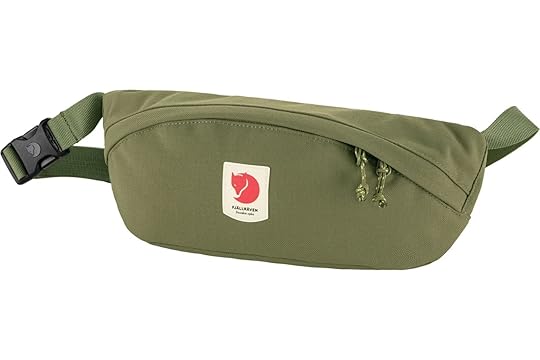
Photo: Fjallraven
The fanny pack has made a triumphant return. They are back with a vengeance, and rightly so. Wear it with your bikini to store your SPF, sunnies, and cabin key card, or pop it on for a quick excursion with your ID when disembarking the ship. It’s a great alternative if you don’t want the bulk of a shoulder bag and keeps your valuables secure and essentials close to hand. If you’re going to go branded (and you don’t need to, as there are so many plain-colored styles for under $10), have a look at the range from Fjallraven. Fjallraven’s have some neat internal pockets and are weather-resistant.
Buy Now on AmazonA page turner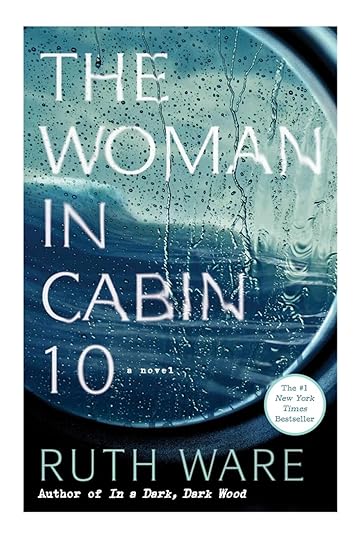
Photo: Ruth Ware
Outside excursions, I spent most of my time sipping on a spritz poolside reading. I’m not ashamed about my vacation book list, it’s packed with page-turners like Ruth Ware’s Cabin 10, which tells of a murder at a luxury press launch on a boutique cruise ship. Perhaps a little on the nose, but luckily, no one was thrown overboard during my sail.
Buy Now on AmazonIsle of Paradise tanning dropsView this post on InstagramA post shared by Isle of Paradise (@theisleofparadise)
I’m in my late 30s, and in the sun, I’m wearing a hat. I also don’t always want to wear make-up, especially during the day. So, I swear by the Isle of Paradise tanning drops for a natural, sun-kissed glow. They’re easy to use, give a beautiful tan, and help even out skin tone. All you need to do is mix a drop or two into your night cream and apply it to your face and kneck – just remember to wash your hands after application.
Buy Now on AmazonDr.Jart Ceramidin Cream Mist
Photo: Dr.Jart+
The other spritzing I was doing by the pool was using Dr. Jart’s hydration cream mist. It’s been my go-to moisturizing spray for a couple of years, and I’m never in the sun without it. The formula is lightweight, combining a water layer for instant refreshment with a moisturizing oil layer for deep hydration. My skin also tends to get sensitive in the heat, and this spray instantly calms it down.
Buy Now on AmazonA neck lanyard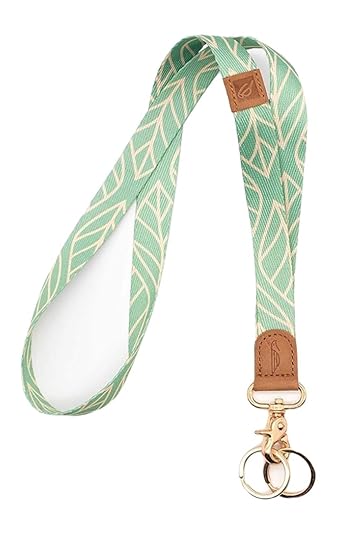
Photo: Amazon/ POCKT
I gave in and purchased a lanyard by my second cruise. Your cruise card is essential. It unlocks your cabin, acts as your onboard currency, and grants access to various areas—and a lanyard keeps your card constantly around your neck, allowing for easy swiping and eliminating the need to fumble in pockets or bags.
Buy Now on AmazonAway That Day Hamptons one-pieceView this post on InstagramA post shared by Away That Day Swim (@awaythatday)
This swimsuit can be hard to get hold of. I had to wait a couple of weeks for the white to come back in stock, and I’m so glad I did. It’s the most comfortable one-piece I’ve ever owned, and it’s crafted from a luxurious textured fabric that holds everything in place. I also dressed it up with high-waisted shorts, a knotted shirt, and wedges for lunch in the main dining room.
Buy Now on Away That DayKORA Organics Silky Sun Drops mineral sunscreen serumView this post on InstagramA post shared by KORA Organics (@koraorganics)
This SPF serum by KORA Organics — the skincare brand founded by Australian supermodel Miranda Kerr — is water-resistant and lightweight, making it comfortable to wear throughout the day, even in the Caribbean sun. I took another SPF spray for my body, but I wanted something a little extra for my face and neck (it contains antioxidant-rich botanicals like raspberry seed oil and chia seed oil, which can help protect your skin from free radical damage caused by sun exposure.) I love that the drops are lightweight and fast-absorbing, and the bottle is small (30ml). It’s perfect for slipping into your carry-on, so you have some SPF to hand while waiting for your luggage to be delivered to your cabin.
Buy Now on KORA OrganicsThe Reformation Jessi linen dress
Photo: Reformation
Your cruise will likely have a white party, so I packed this linen shift dress by The Reformation. It’s slightly oversized but meant to be, hangs beautifully, and feels simply luxurious. The only drawback is the fabric. Linen is tricky enough with a steamer on hand, but because there are no irons on board, I took a wrinkle-releasing spray, and it worked a treat. 
June 24, 2024
Meet the Woman Turning Curaçao’s Invasive Lionfish Into Delicious Meals and Beautiful Jewelry
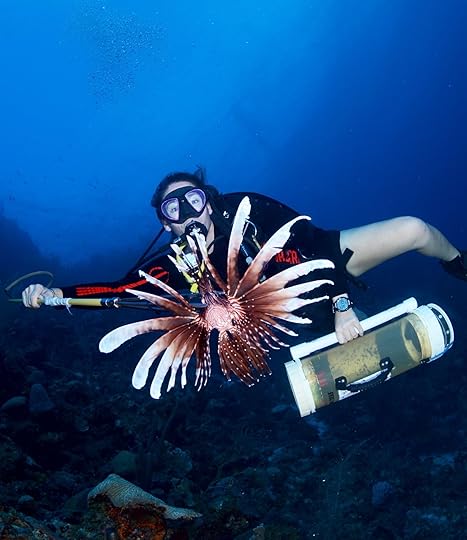
Lionfish look stunning. Vibrant stripes circle the entire body, and venomous, striped spikes shoot out at all angles. They’re also one of the most invasive species in the world. Originally from the South Pacific, Indian Ocean, and Red Sea, lionfish were introduced to the Caribbean via Florida, where people kept them as tank fish that were then released or accidentally set loose during hurricanes.
Today, lionfish wreck havoc on fragile aquatic environments in the Caribbean. They have no natural predators and can lay up to two million eggs per year. Lionfish devour the native fish species that maintain the balance necessary for healthy coral reefs, and contribute to depleted fish stocks that people already overfish. The world’s apex predator, humans, are starting to fight back.
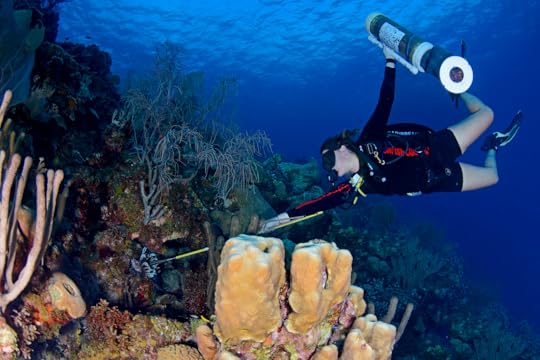
Photo: Lisette Kues
On Matador Network’s podcast No Fixed Address: The World’s Most Extraordinary People, Michael Motamedi and Vanessa Salas sat down in Curaçao with Lisette Kues. Kues hunts lionfish for her Willemstad restaurant and store Lionfish Caribbean, where the meat is turned into a range of cooked and raw lionfish dishes and the carcass turned into jewelry. Her community of lionfish hunters is helping to manage the invasive population and protect the reefs in an aesthetic, delicious way.
Kues was born in The Netherlands and lived an early nomadic lifestyle thanks to traveling parents who took her to New Zealand and Australia in her childhood to live in a camper van for more than a year. They then moved to Curaçao, a Dutch Island, for five years. It made a lasting impression on Kues. After college in The Netherlands and a short stint working in Bangladesh, Nepal, and India, she moved back to Curaçao and worked as a journalist.
Kues worked on a story on lionfish that peaked her interest on this creature she saw while diving — a fish that she doesn’t remember seeing when she lived in Curaçao when she was younger. By 2010, Kues had left journalism to hunt lionfish full time with a lionfish supply business for chefs and then her own restaurant and jewelry business.
Curaçao is a world-class diving destination with dozens of accessible dive spots that can be reached from the beach. The water has high visibility and an easy current — prime conditions for spearfishing lionfish. Kues and other lionfish hunters approach from the side and spear the animal in the head for a quick kill that keeps the meat clean. A skilled hunter on an average, hour-long dive can kill 40 lionfish.

Photo: Lisette Kues
The intimidating, poisonous spikes are defensive. Swarms of lionfish aren’t attacking people, but their spikes are keeping most away — for good reason, considering the painful venom can cause swelling, nausea, and other symptoms. The venom isn’t an issue for eating the fish raw as ceviche, sashimi, or tartare if it’s cleaned correctly, and cooking or drying the meat neutralizes the poison.
Without natural predators and having an extremely productive birthrate, hunting alone won’t solve the lionfish problem. It’s not nothing, though, and Kues also raises awareness of how lionfish impacts native animal and plant life in the Caribbean. Plus, it’s delicious.
To hear more, listen to episode 10 of No Fixed Address on your favorite listening platform.
More like thisNo Fixed Address: The World’s Most Extraordinary PeopleOnly One US Carrier Made the World Airlines Awards Top 25

Skytrax, one of the most well-known airline rating sites, release its annual list of the best airlines in the world. Many beloved airlines made the list once again, but in bad news for US travelers, only one US-based airline made the list of the top 25. And many of this year’s award winners were the same as years past.
Qatar AirwaysSingapore AirlinesEmiratesANA All Nippon AirwaysCathay Pacific AirlinesJapan AirlinesTurkish AirlinesEVA AirAir FranceSwiss International Air LinesKorean AirlinesHanain AirlinesBritish AirwaysFiji AirwaysIberiaVistaraVirgin AtlanticLufthansaEthiad AirlinesSaudi Arabian AirlinesDelta AirlinesAir New ZealandFinnairQantas AirwaysOman AirAmong US carriers, Delta was the only US-based carrier to make the list of the best airlines of 2024. The next American airline was United, coming in at number 42 of 100. Click here full the full list of the top 100 best airlines for 2024. It’s similar to last year’s list, in which the top five were Singapore Airlines, Qatar Airways, ANA All Nippon Airways, Emirates, and Japan Airlines.
But the “best airlines of 2024” wasn’t the only award granted by SkyTrax. Other awards included the world’s best cabin crew (Singapore Airlines, based in Singapore), the world’s cleanest airline (Cathay Pacific Airlines, based in Hong Kong), and the best airline in Europe (Turkish Airlines). There was also an award given for the world’s best low-cost airline carrier. That prize went to Scoot Airlines, a subsidy of Singapore Airlines. It currently flies to 15 countries in Europe, Asia, and the Middle East. 
How to Renew Your Passport in Less Than Two Weeks
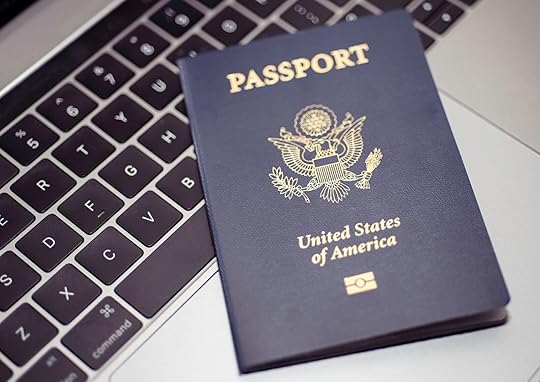
By the first couple of months of 2023, my now-wife and I had finished planning for our upcoming summer wedding in Italy. Yet in the midst of all of that planning I had overlooked one major component: My well-worn passport was nearing its expiration date. I wouldn’t have the required six months before expiration for entry into the country, and I was also supposed to be traveling far sooner than the expected renewal processing time that was still catching up from pandemic-related delays.
It turned out that adding an earlier last-minute international trip was the best solution.
Passports for United States citizens are good for 10 years. Regular international travel toward the back half of those 10 years meant I never really a chance to wait on the ambiguous standard or expedited renewal processing times because the next trip was always around the corner. Passport renewal horror stories about how long even expedited service can take had me (and possibly to an even larger extent, my wife) worried for our Italy trip, to say the least. Then, after opening a new browser tab for every expedited passport application service I could find, I came across the Department of State’s urgent travel renewal option.
The urgent travel service is designed for people with booked international travel in the next two weeks. It requires proof of international travel (like a flight ticket and receipt) in that time window, a little extra paperwork, and an appointment at one of the 26 passport agencies across the country. Living in Denver, I luckily had a passport agency just a few miles from my home.
Here’s how it works:
Make an appointment at your nearest passport agency with the online passport appointment system (there is no walk-in option)To qualify, you must have proof of travel within 14 calendar days of your appointmentPrint and fill out the standard passport renewal documents to bring to your appointment (as well as your previous passport), proof of travel, and a short list of extra documents sent over emailExplain your travel and passport needs to the agent at your allotted appointmentThe agent assigns a pick-up date based on needWait for the confirmation email that your new passport is ready for pick-up a few business days laterI wasn’t prepared to test out the urgent renewal process for our Italy trip with a wedding on the line, so I booked a cheap flight to Mexico for a weekend a month out and started looking for an available passport agency appointment time in the 14-day window. The appointments book up fast and the office is only open for a limited number of hours, so some scheduling flexibility is needed.
After a lot of waiting in line past my appointment time and a quick interview with the agent, I was sent home with the promise that I’d have a pick-up time confirmation within five business days. The confirmation came via email even faster than expected. I had my new passport in hand a few weeks after booking my flight and a few days before I was scheduled to head to Mexico.
There are some notable caveats for anyone in need of a passport fast. The biggest is the location of passport agencies. Most are in major cities on the coasts and borders with Canada and Mexico. Denver and Hot Springs, Arkansas, are an exception. If you don’t already live in one of those cities, it would require spending at least a week in a city that has one. Booking an entire extra trip for a passport is pricey even for affordable destinations, but at least it’s an excuse to use more vacation days, which Americans desperately need to do (people with a higher uncertainty tolerance could skip that step and only plan around their main trip, though). Appointment times are also only available in the middle of the work day, and there’s no guarantee an appointment with be available at a time that’s convenient to you.
The benefits, however, outweigh the costs if you’re in need of a passport fast. There are no extra fees for the appointments, unlike the private passport expediting companies that can charge hundreds of dollars for basic services. Speaking directly with someone in person also gives a whole lot more peace of mind than mailing important documents and hoping for the best.
All in all, it’s better to be prepared far ahead of time. The nightmare days of passport renewals that take months to complete that followed the height of the pandemic are mostly over. The State Department is trialing online passport renewals, and a series of passport fairs offer faster service.
But when you need a passport fast, urgent travel renewal is the best way to go. 
Finding Myself on an Adventurous (and Solo) Wyoming Road Trip
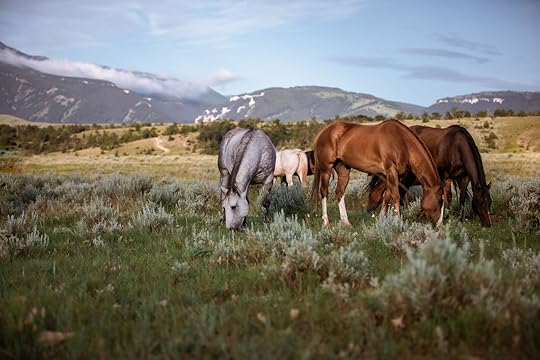
When facing tough life decisions, sometimes, having time alone for introspection can be just what you need. And what better way to do that than to hit the road in an inspiring location, with a good playlist, a tank full of gas, and a blank journal? (And limited cell service, in my case.)
When I set out on my solo Wyoming road trip through the picturesque Bighorn Mountains in Wyoming, I was apprehensive, as it was my first road trip alone. However, I was eager for some time away from my usually busy schedule to focus on discovering what’s most important to me at this point in my life. Many of us – myself included – spend much of our time just going through life, getting wrapped up in our day-to-day activities without making time to reflect and plot intentional paths forward toward our goals.
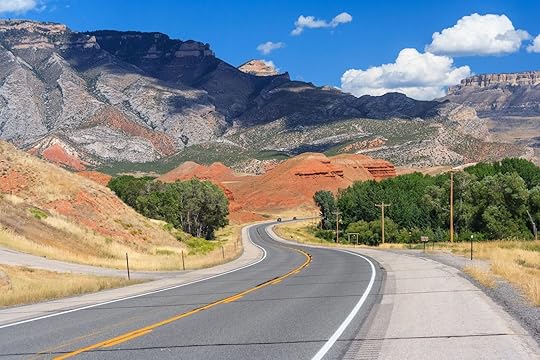
Photo: amadeustx/Shutterstock
When I found myself with few free days to travel, I decided to make space for daydreaming, reminiscing, and setting future goals. And a Wyoming road trip seemed like it would provide plenty of wide-open spaces to support my wandering and wondering.
The Bighorn Mountains of Wyoming have an ever-changing landscape, dotted with roaming wildlife, charming small towns, and friendly residents. It turned out to be an ideal location, away from the crowds of Yellowstone and Jackson Hole, and with just enough activities to challenge me, but not enough to create a schedule of endless distractions.
My Wyoming road trip routeTotal driving distance: +/- 501 milesTotal driving time: +/- 9 hoursDay one: Cody to BuffaloDriving distance: 220 milesTotal drive time: 4 hoursI started by flying into the Yellowstone Regional Airport in Cody, Wyoming (not to be confused with Yellowstone Airport in West Yellowstone, Montana). In Cody, I picked up a rental car and headed east to beautiful Shell Falls for my first stop in the Bighorn Mountains.
It sits along the Bighorn Scenic Byway and the drive there passes through the 1.1 million-acre Bighorn National Forest. It’s a sprawling landscape of vast open plains, steep canyon walls, dense forests, streams and creeks, green meadows, and stunning red cliffs. To stretch my legs and appreciate the beauty, I stopped at the Shell Falls National Recreational Trail, an easy trail with several lookout points. After breathing the fresh mountain air, listening to the rush of the falls, and taking in the splendor of the scenery, I found a bench facing the 120-foot-tall falls and pulled out my journal to start plotting my dream life. Off to a good start.
Next, I started driving to Tensleep Canyon, where I’d booked my first official activity of the trip: guided rock climbing. On the way, I stopped in the sleepy town of Greybull (population 1,700) for lunch at Lisa’s Western Cuisine & Spirits. Like many of the small towns in the region, the main street is lined with historic brick buildings housing restaurants, motels, and shops. With timber walls, rodeo artwork, and a menu featuring Southwestern and Tex-Mex cuisine, I filled up on pasta primavera and a spinach salad. Reaching Tensweep was a lot of driving, but it gave me the time to alternate between listening to a motivational audio book, and having quiet time to contemplate and appreciate the scenery.
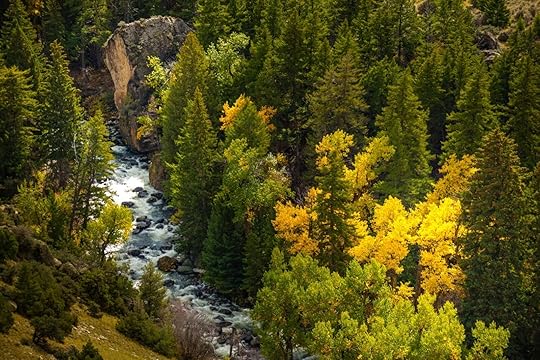
Photo: Kris Wiktor/Shutterstock
At Tensleep Canyon, I met up with Wyoming Mountain Guides owner Zach Lentsch, who belayed me on a challenging (well, challenging for me, at least) 50-foot-tall climbing route across a limestone face. Lentsch grew up climbing in Wyoming and is eager to make climbing accessible to everyone, while educating the next generation on the importance of sustainability. Witnessing him living a life of such passion made me grateful for taking time to ensure the utmost contentment in my own life.
After a successful climb, we ducked behind some overgrown trees and scrambled around towering boulders to a point overlooking a 100-foot-tall face – and the dramatic terrain below. From there, I could see the rugged gray-and-painted-red rocks against the lush green valley, divided by rushing Tensleep Creek. Despite some trepidation, I managed to make it to the top of the much taller route, and came away from the afternoon feeling confident and proud. From the front seat of my car, with the door open, I listened to the soothing sounds of the creek while jotting down some poignant thoughts in my journal.
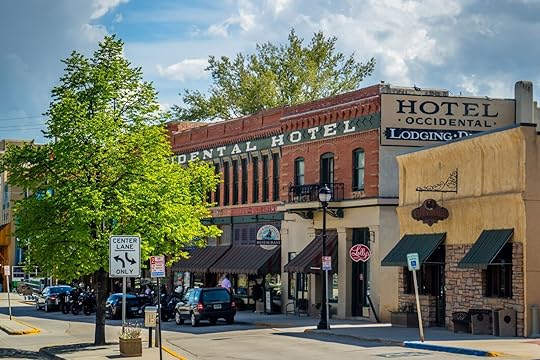
Photo: Cheri Alguire/Shutterstock
My last drive for the day took me to Buffalo, Wyoming, along the Cloud Peak Skyway Scenic Byway. Feeling good after climbing, I sang out loud to my favorite ’80s tunes playing on the local radio station as I passed ponderosa pines, Douglas fir, cottonwoods, and aspen trees.
By the time I reached Buffalo, I was hungry and tired, and happy to check into The Historic Occidental Hotel. The Victorian hotel dates to 1808 and is a museum as well as a hotel, housing artifacts and antiques from the Old West era, when it hosted guests like “Buffalo” Bill Cody and Butch Cassidy.
While sinking my teeth into a tasty black bean burger (no bison burgers for this vegetarian) at on-site Saloon restaurant, I was treated to vocals by a talented local duo singing “You are My Sunshine,” loud and proud. I called it a night, climbing listlessly into my bed with a brass headboard, cozy quilt, and framed artwork of the Wyoming landscape hanging above.
Day two: Buffalo to SheridanDriving distance: 87 milesTotal drive time: 1.5 hoursWith a belly full of cinnamon roll French toast from Buffalo’s Busy Bee Cafe, I started day two of my Wyoming road trip bound for the town of Sheridan. But on the way, I planned to stop for a long hike in the stunning Tongue River Canyon, about an hour from Buffalo.
Driving down the dirt road to the trailhead, I was in awe of the jagged cliffs towering above me. The sky was a brilliant blue shining above the dark green forest. Donning my hydration backpack and bear bell — though I wished I’d brought bear spray — I grabbed my hiking poles and set off on my first solo hike in the remote wilderness.
The trail paralleled the Tongue River, providing a calming soundtrack for my hike. My mind flip-flopped between focusing on the sense of grandeur the landscape provoked, and a tinge of fear. “What the hell would I do if I encountered a bear? Or some weirdo hiding in the woods?” I wondered. “There’s no one out here to save me.” I reminded myself to breathe, and even with my “fight-or-flight” reflexes in a constant battle, the beauty of nature inspired me to trot on, finishing the four-mile hike with a sense of accomplishment – and only a tinge of disappointment that I had no one to share it with.
Before I left, I sat at a picnic table overlooking the river and scribbled in my journal some ideas about how to live more mindfully.
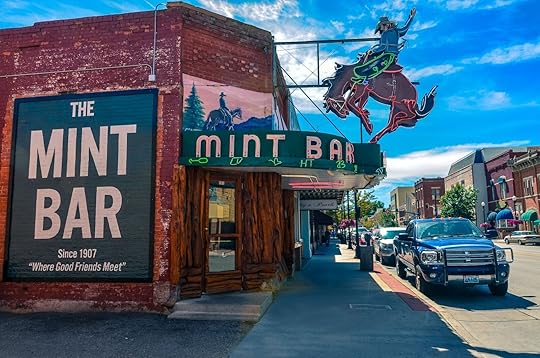
Downtown Sheridan, Wyoming. Photo: Sandra Foyt/Shutterstock
After hiking, I drove on to Sheridan, where I’d booked a fly-fishing class. Wyoming is the least populated state in the US, but Sheridan is used to seeing its fair share of tourists as it’s the midpoint between Mount Rushmore and Yellowstone National Park. After a quick lunch, I headed to the Fly Shop of the Bighorns to meet my fishing guide from Rock Creek Anglers, who outfitted me with waders, a pole and some synthetic flies.
We headed to nearby Piney Creek, where I learned how to find the perfect fly-fishing spot: not too deep or too shallow, with water that isn’t running too fast or slow. As a first-time fly fisher, the intricacies of the flies impressed me. My guide’s tackle box overflowed with colorful creatures mimicking bugs the fish would normally eat.
After learning the basics and watching my guide (and sixth-grade teacher) Scott Schroder whip the line, I waded in and tried the same thing. No luck. Schroder kept urging me, suggesting “Use your elbow, not your wrist.” Though I didn’t catch “the big one” (or even a little one, for that matter), I did enjoy the beauty of the area, getting to chat with Schroder, and learning the subtleties of fly fishing. We even saw a mink in the wild.
My bed for that night was at the Historic Sheridan Inn, a registered National Historic Landmark with the National Park Service, founded in 1893 to service those traveling west by train. My room was named after Queen Victoria, a known fan of Buffalo Bill’s “Wild West Show.”
Day three: Sheridan to LovellDriving distance: 148 milesTotal drive time: 3 hoursOn day three, I headed to what ended up being my favorite part of my Wyoming road trip: the Medicine Wheel Passage Scenic Byway. This steep, two-lane road is one of the steepest in the country, passing through the Bighorn National Forest in the Bighorn Mountains, and moose and pronghorns moseyed across the road in front of me several times. The highest point (9,430 feet in elevation) was still covered in snow in early June, and overlooked the stunning Big Horn Basin below, like a painting with muted hues of green, red, yellow, blue and gray.
My next stop was Pryor Mountain Wild Mustang Center in Lovell to search for wild mustangs in the Bighorn Canyon National Recreation Area. I went out with the center’s Executive Director Nancy Ceronni, putting her Jeep to the test on the red, rugged, and rocky road through the Martianesque landscape of the wild horse range. Thanks to Ceronni’s knowledge, we encountered more than a dozen of the nearly 200 majestic mustangs who live in the area. Along the way, I learned about the history, markings, coloring, behaviors, plight, and politics around the horses.

Photo: Christy berry/Shutterstock
With a population of about 2,405, Lovell does not have many options for dining or accommodations. But there are plenty of outdoor recreation opportunities in the area, including lots of hiking trails in Bighorn Canyon. I spent the afternoon searching for trailheads off Highway 37 – the Sykes Mountain Trail is one of the more popular — but I struggled on my own to find the trailheads. Instead, I drove to Devil Canyon Overlook in Montana, which blew me away.
From the top of the 1,000-foot-tall cliffs, I peered down into the horseshoe bend of the canyon where the Bighorn River flowed silently below. I took my time meandering quietly on the short loop trail, taking in the sights, sounds, and smells of the landscape, which I had all to myself. It was the perfect place to pull up a seat on a bench and jot some thoughts in my journal.
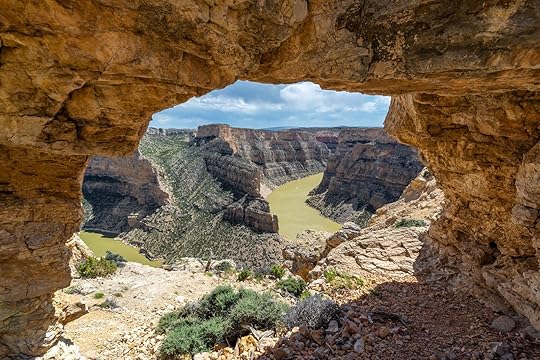
Photo: Alberto Loyo/Shutterstock
After hiking, I returned to Lovell and checked into my last stay of my Wyoming road trip, at the boutique Horseshoe Bend Motel. Owner Bobbi McJunkin took over the hotel from her father and gave it a modern facelift.
As a solo female traveler, I was a bit unnerved to notice the group of men staying in the room next to me hanging out and drinking beers in the parking lot. In my room, I hurriedly pulled the blinds closed and locked the door. But around 9 PM, I was startled by a knock on my door from McJunkin. It turns out I had left my key on the outside of my door, and the guys next door had kindly asked McJunkin to let me know.
Day four: Lovell to CodyDriving distance: 46 milesTotal drive time: 50 minutesAfter a few days of solitude, surrounded by the beauty of nature and wildlife, I started the journey back to Cody to head home and stopped at the Buffalo Bill Center of the West. I was out of time, but if I’d been able to squeeze in another hike, I would have hired a hiking guide to show me some of the local trails around Cody. They’re a good option for solo travelers who don’t want to hike alone.
On the drive back, I reminisced about the stunning scenery and interesting people I met along the way. The trip gave me insight into a cowboy-focused, outdoor culture I hadn’t experienced, and let me peek into what small town life is like – quite different from my home in LA. The experience made me realize that many people pass through these small towns on the way to do or see something else, but don’t realize that the towns, and the history and experiences in them, are worth stopping in their own right.
While initially hesitant to take the Wyoming road trip alone, it gave me the time and bandwidth not only for self-reflection, but for seeing the state on my own terms. I stopped when and where I wanted, and got to have one-on-one conversations with guides and small-business owners. It gave me a few days to focus just on myself – and the courage to hit the open road solo again next time.
What to pack for a solo road tripIf you’re planning on setting off on a solo, contemplative journey in an off-the-beaten-path location, you’ll want to do some pre-planning. Here’s what I found came in handy while spending long hours on the road in remote locations.
An inspirational audio bookA sing-along playlist (downloaded)A journal and pen; maybe even colored pencils for sketchingLots of water and snacksMap and printed directionsFirst-aid kitCharged portable power bankHealth insurance cardSunglasses, sunscreen, hatTravel and/or health insurance, depending on your primary plan More like thisHiking9 of the Best Wyoming Hiking Trails for Amazing Views and Small Crowds
More like thisHiking9 of the Best Wyoming Hiking Trails for Amazing Views and Small Crowds
Escape to These Dreamy Gatlinburg Airbnbs High in the Smokies
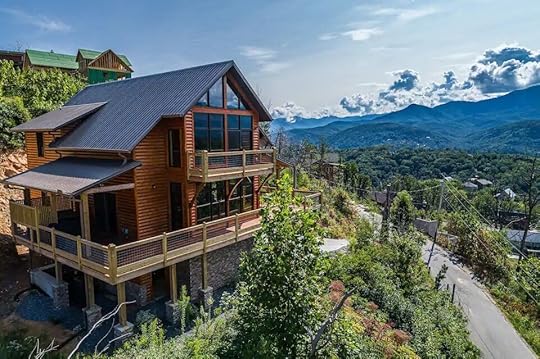
Swap skyscrapers for mountains with a cozy getaway to the Smoky Mountains. Gatlinburg, Tennessee, is bursting with cabins, chalets, and lodges where you can unwind without sacrificing your home comforts. This is our pick of the best listings on Airbnb, Gatlinburg, for a dose of the àpres lifestyle whatever the season.
Gatlinburg Airbnbs with mountain viewsGatlinburg, TN Airbnbs with private poolsGatlinburg cabins on AirbnbGatlinburg treehouses on AirbnbTiny houses in Gatlinburg on AirbnbWe hope you love the Airbnb Gatlinburg rentals we recommend! Just so you know, Matador may collect a small commission from the links on this page if you decide to book a stay. Listed prices are accurate as of the time of publication.
Gatlinburg Airbnbs with mountain viewsYou’re coming to Gatlinburg to escape to the mountains, so you might as well have a view of them, right? These Airbnbs in Gatlinburg offer excellent mountain views with large decks and ample space to roam.
Four Sisters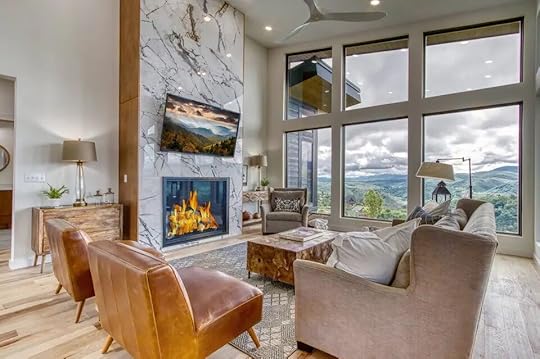 Photo: Airbnb
Photo: Airbnb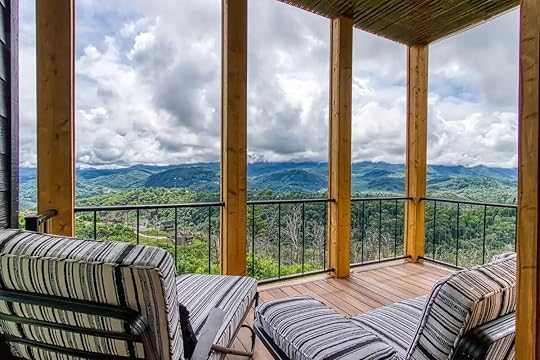 Photo: Airbnb
Photo: Airbnb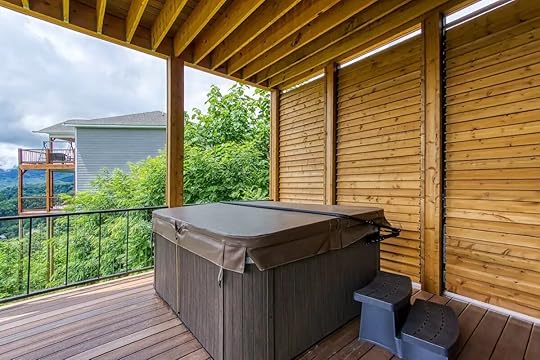 Photo: Airbnb
Photo: Airbnb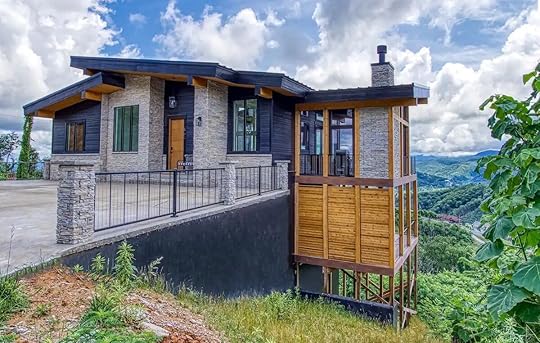 Photo: Airbnb
Photo: AirbnbSee more photos
This stylish lodge in Chalet Village, Gatlinburg, marries modern-day luxury with a wild setting. The internal space is furnished with a sleek kitchen, deep soaking tubs, and limitless natural light courtesy of the massive windows. Each of the five bedrooms has an en-suite attached. Guests have seasonal access to the adjacent clubhouse facilities including a shared heated outdoor pool.
Twelve guests, five bedrooms
Price: $815 per night
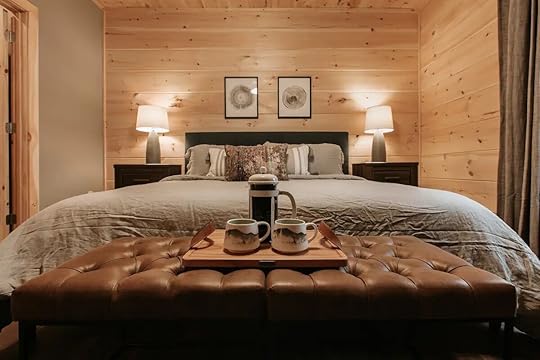 Photo: Airbnb
Photo: Airbnb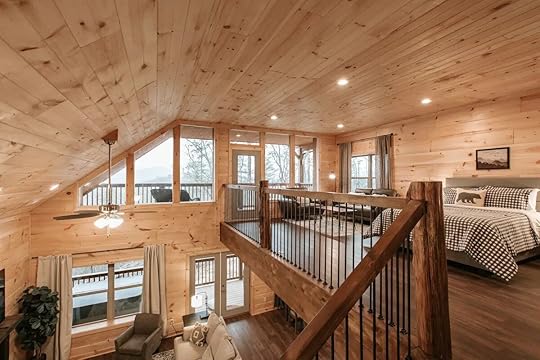 Photo: Airbnb
Photo: Airbnb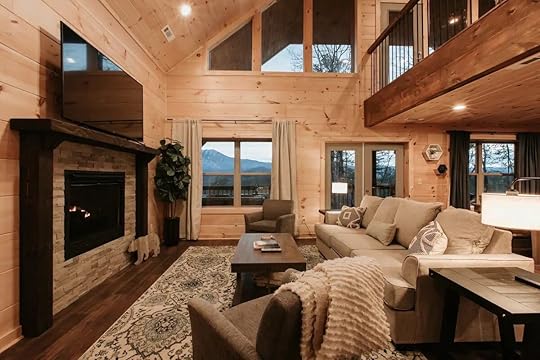 Photo: Airbnb
Photo: Airbnb Photo: Airbnb
Photo: AirbnbSee more photos
Situated 3 miles from downtown Gatlinburg, the Lookout Loft will captivate you with its thoughtful touches and gorgeous vistas across Mount Le Conte. The private spa and firepit in the backyard are there to keep you toasty on a chilly evening in the mountains. We implore you not to bicker over who gets the loft bedroom with its attached balcony.
Eight guests, three bedrooms
Price: $270 per night
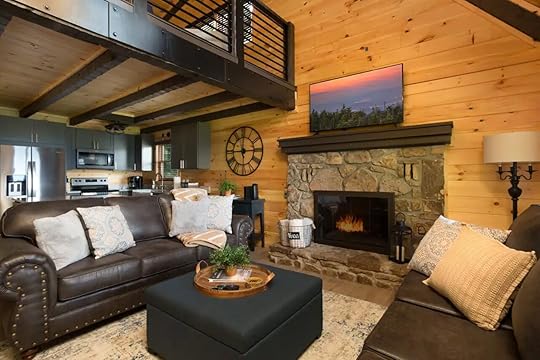 Photo: Airbnb
Photo: Airbnb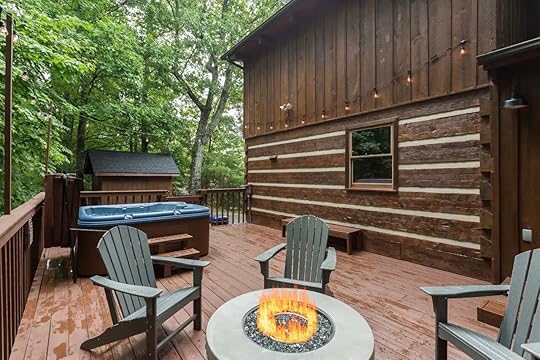 Photo: Airbnb
Photo: Airbnb Photo: Airbnb
Photo: Airbnb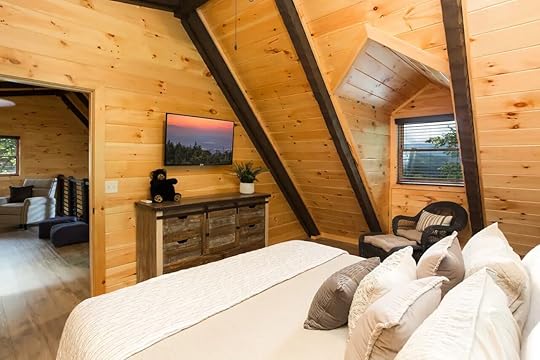 Photo: Airbnb
Photo: AirbnbSee more photosThis renovated cabin feels surprisingly isolated despite downtown and the Arts and Crafts District being under five miles away. Come rain, shine, or storm, the mountain vistas are incredible inside and out. The loft has a games room and the main lounge is kitted out with decadent leather couches for fireside chitchat. That moon roof makes showering less of a chore.
Eight guests, two bedrooms
Price: $383 per night
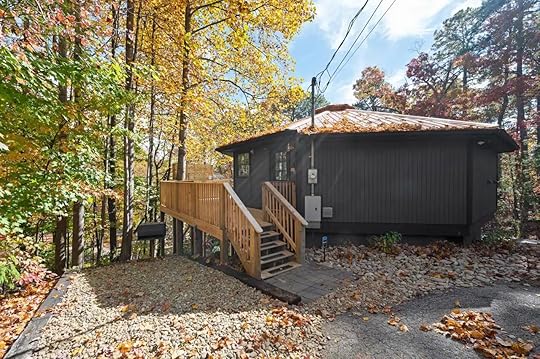 Photo: Airbnb
Photo: Airbnb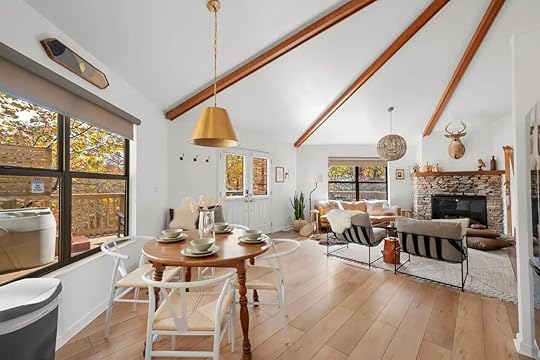 Photo: Airbnb
Photo: Airbnb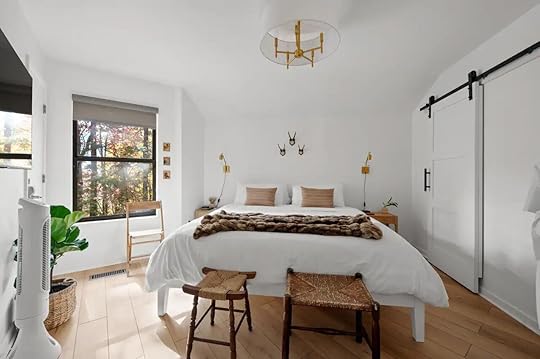 Photo: Airbnb
Photo: Airbnb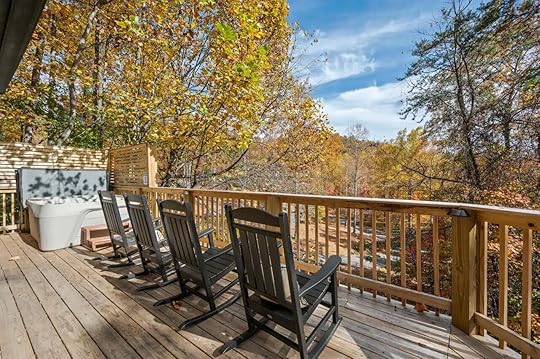 Photo: Airbnb
Photo: AirbnbSee more photosEver wondered what staying at one of the top 1 percent of Airbnbs gets you? Book this dreamy cabin rental in a chalet community on the edge of town to find out. The octagonal shape is fun, not a single amenity is amiss, and the black and gold fittings add a classy finish. There’s a hot tub on the verandah and two Nintendo consoles and board games indoors.
Four guests, two bedrooms
Price: $298 per night
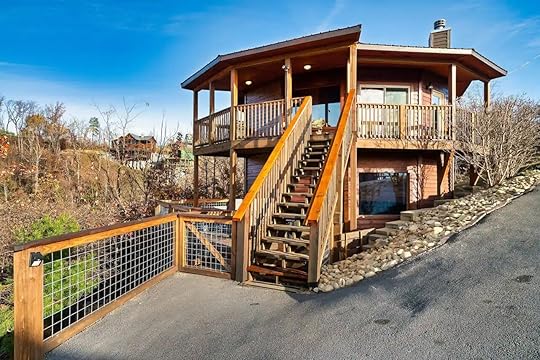 Photo: Airbnb
Photo: Airbnb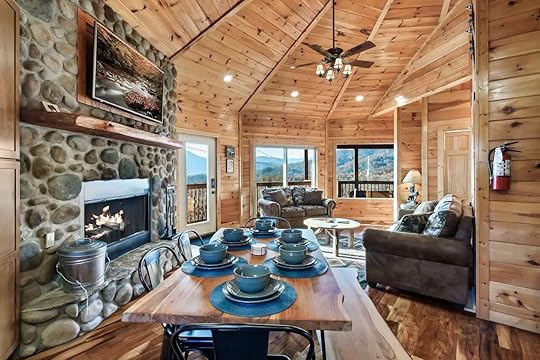 Photo: Airbnb
Photo: Airbnb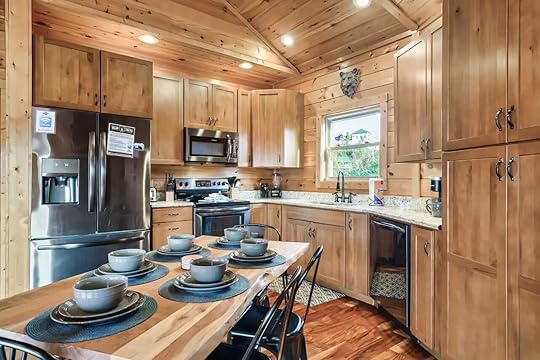 Photo: Airbnb
Photo: Airbnb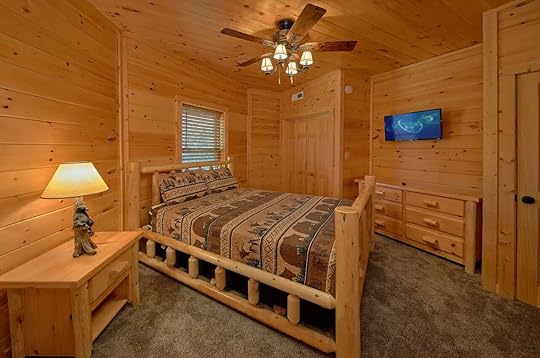 Photo: Airbnb
Photo: AirbnbSee more photosTen minutes from Gatlinburg and Pigeon Forge, this Tennessee Airbnb with a hot tub gives the luxuries of a hotel and the attitude of a cabin rental. The circular design veers toward lighthouse and treehouse territory – and makes it impossible to avoid the scenery. Spend evenings soaking in the spa with one eye peeled for bears before bunking down in custom-made log beds.
Six guests, three bedrooms
Price: $489 per night
Traveling to Tennessee? Check out Matador’s top Tennessee accommodation guides:Gorgeous Tennessee Airbnbs across the state for your next southern roadtripThe best Airbnbs in Nashville for a bachelorette getawayThe 11 best Nashville Airbnbs by neighborhoodGatlinburg, TN Airbnbs with private pools
A post-hike swim is in order at these Gatlinburg Airbnbs. Each has a private pool, accented by spectacular surrounding scenery.
Bear Moon Rising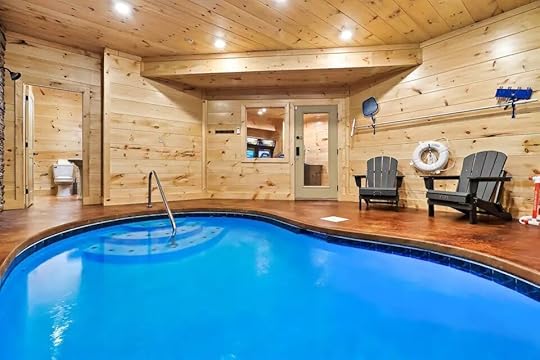 Photo: Airbnb
Photo: Airbnb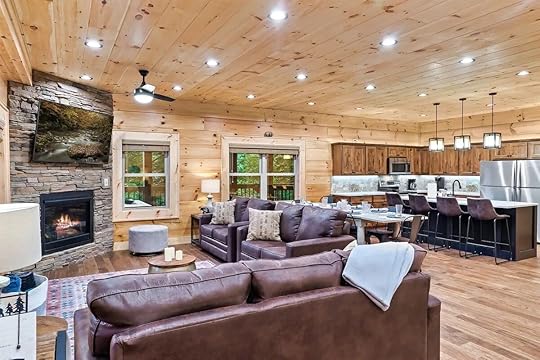 Photo: Airbnb
Photo: Airbnb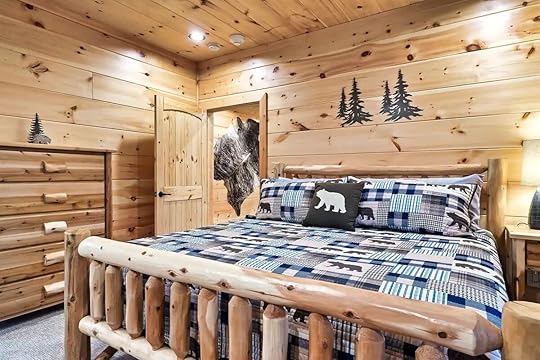 Photo: Airbnb
Photo: Airbnb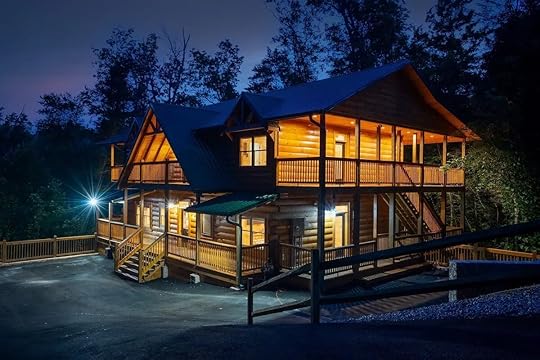 Photo: Airbnb
Photo: AirbnbSee more photos
Vacation rentals with a private indoor swimming pool in Gatlinburg are hard to come by but Bear Moon Rising has you covered. This huge, three-story log cabin is rustically appointed with exposed woodwork throughout. In addition to the heated indoor pool, this Airbnb has two hot tubs. Once you tire of all the rest and relaxation, you can challenge your pals to snooker or a session in the arcade room. The cushy movie theater is perfect for Netflix nights.
Sixteen guests, six bedrooms
Price: $1,000 per night
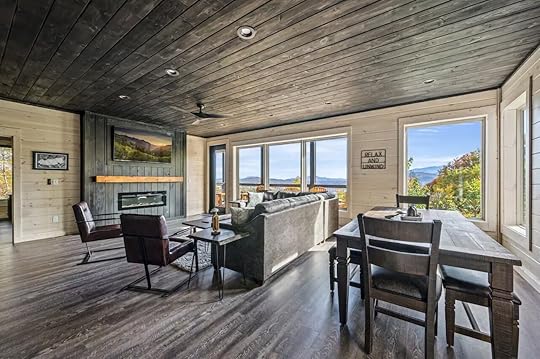 Photo: Airbnb
Photo: Airbnb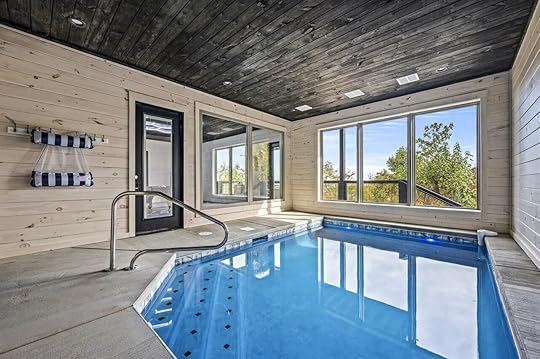 Photo: Airbnb
Photo: Airbnb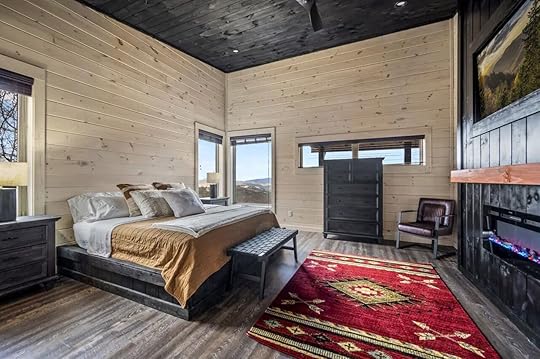 Photo: Airbnb
Photo: Airbnb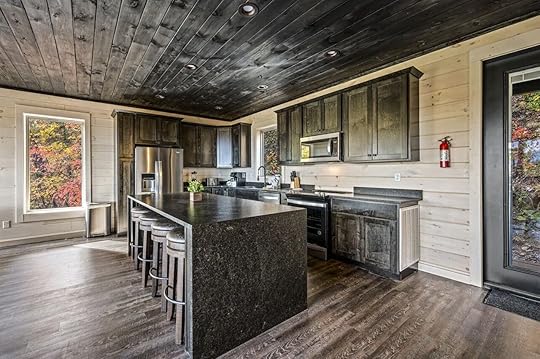 Photo: Airbnb
Photo: AirbnbSee more photosLocated in the prestigious Chalet Village near Ober Mountain, this epic Gatlinburg Airbnb has a heated indoor pool, hot tub, and games arcade. It’s spread over three levels with a balcony on each to capitalize on the scenery. Stocked with board games and giant beanbags, the bunk room is perfect for kids and adults. The pool is readied with floats and vests for younger children.
Fourteen guests, three bedrooms
Price: $634 per night
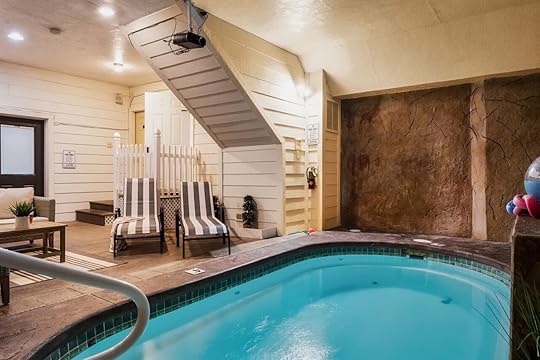 Photo: Airbnb
Photo: Airbnb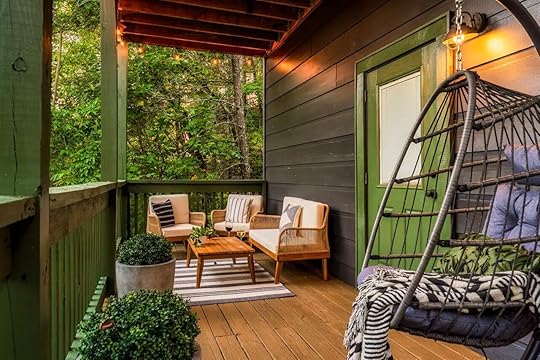 Photo: Airbnb
Photo: Airbnb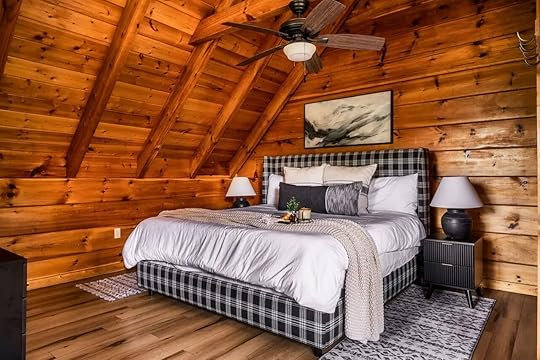 Photo: Airbnb
Photo: Airbnb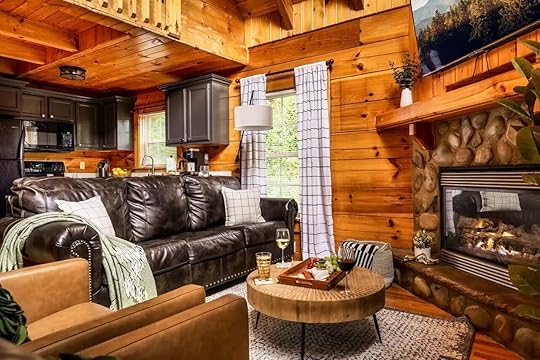 Photo: Airbnb
Photo: AirbnbSee more photosYou’ve heard of drive-in movie theaters but how about a swim-in? This cute cabin in the Tennessee woods has exactly that – and a popcorn maker! Switch things up by diving into the hot tub for sunsets. There’s a king bedroom in the attic plus bunks in the recreation room. You’ve got all of the Smokies at your fingertips but this is the kind of vacation pad you’ll struggle to leave.
Six guests, one bedroom
Price: $308 per night
Mountain cabins are the stuff of Insta-dreams. These Gatlinburg cabins are rustic but luxurious, combining the natural escape you’re looking for, splashed with posh flavorings.
Two luxury cabins with a cinema and spa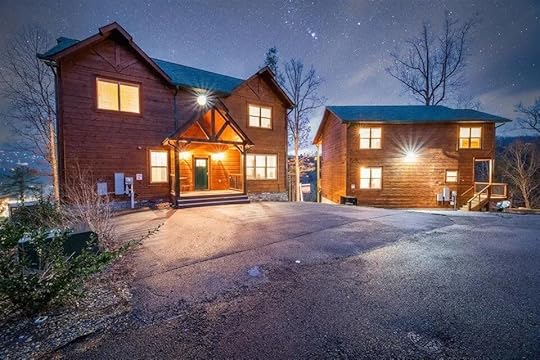 Photo: Airbnb
Photo: Airbnb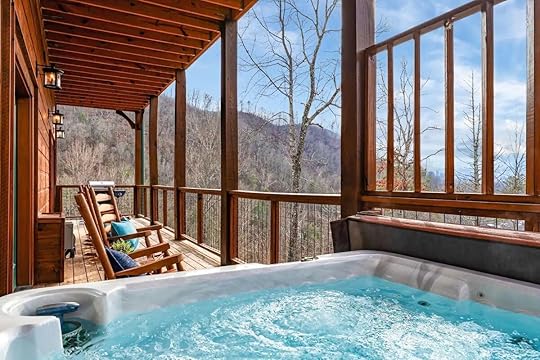 Photo: Airbnb
Photo: Airbnb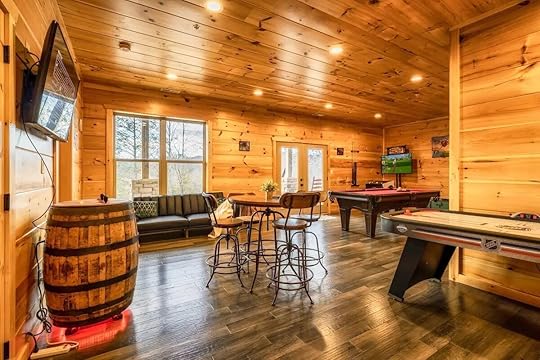 Photo: Airbnb
Photo: Airbnb Photo: Airbnb
Photo: AirbnbSee more photos
Sometimes, one luxury cabin in the mountains isn’t enough. This chic vacation home has two! Each unit consists of a lounge, kitchen, game room, and multiple bedrooms. While one cabin comes with a hot tub, the other features a supersized swim spa. These are positioned on the terraces to capitalize on the scenery. To top it all off, this duo of luxury cabins in Gatlinburg has two home cinemas.
Sixteen guests, ten bedrooms
Price: $1,100 per night
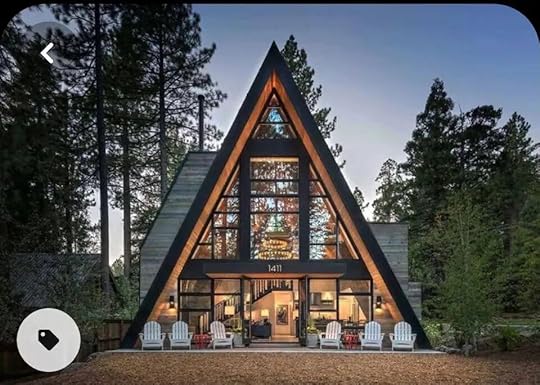 Photo: Airbnb
Photo: Airbnb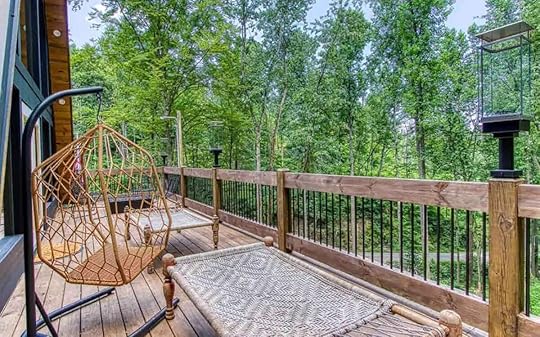 Photo: Airbnb
Photo: Airbnb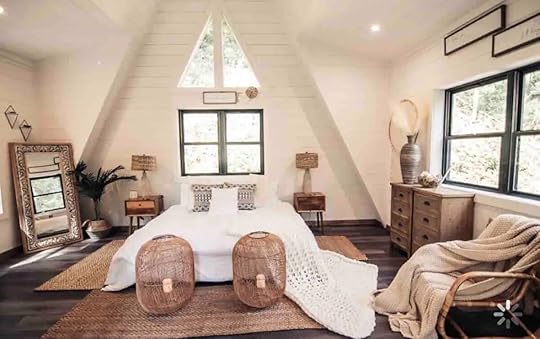 Photo: Airbnb
Photo: Airbnb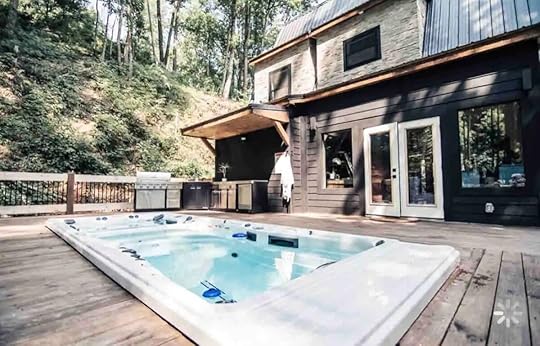 Photo: Airbnb
Photo: AirbnbSee more photos
One of the most unique Gatlinburg cabins on Airbnb puts you right in the middle of your own fairytale. Instagrammable interiors include a claw-footed bathtub, swings around the kitchen island, and bohemian throws here, there, and everywhere. Hanging egg chairs on the terrace and an oversized sunken spa tub invite you to banish your worries. Events are welcome at this party-friendly cabin with prior approval.
Six guests, two bedrooms
Price: $390 per night
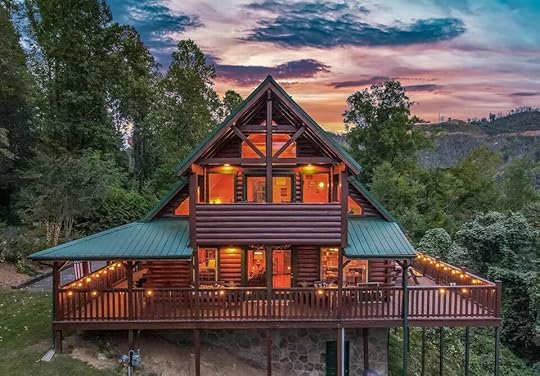 Photo: Airbnb
Photo: Airbnb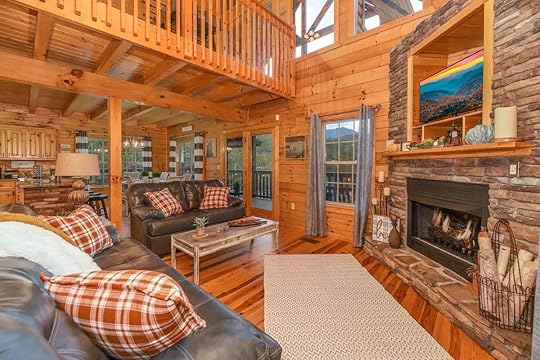 Photo: Airbnb
Photo: Airbnb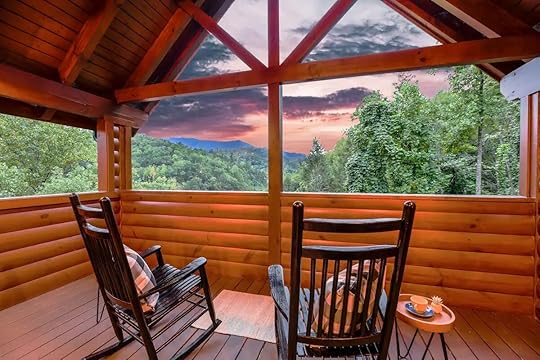 Photo: Airbnb
Photo: Airbnb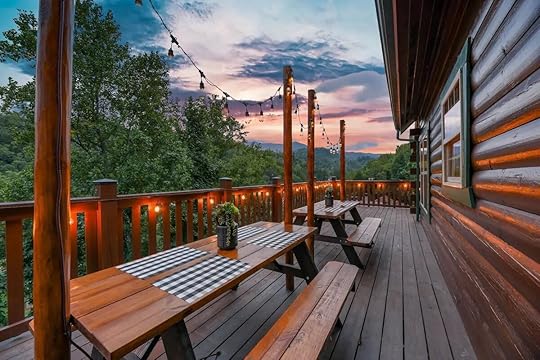 Photo: Airbnb
Photo: AirbnbSee more photos
This downtown Gatlinburg Airbnb hands you the best of both worlds: supreme lodging among nature coupled with a walkable distance to the town center. Spacious interiors are perfectly matched with almost as much external space thanks to the huge wraparound terrace. The elevated location is ideal for taking in the surrounding mountain vistas and keeping a watchful eye out for local black bears. The loft offers infinite entertainment with a ping pong table, a foosball table, and a LEGO wall.
Eight guests, three bedrooms
Price: $540 per night
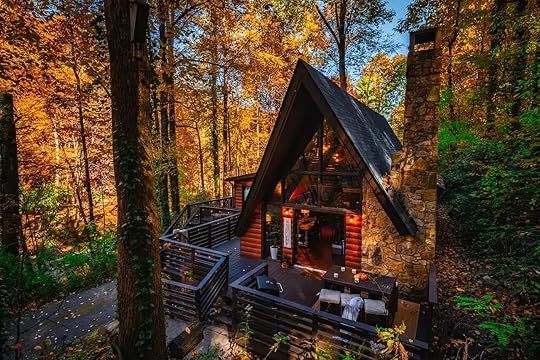 Photo: Airbnb
Photo: Airbnb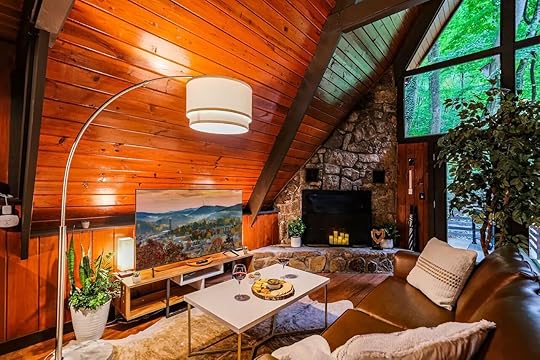 Photo: Airbnb
Photo: Airbnb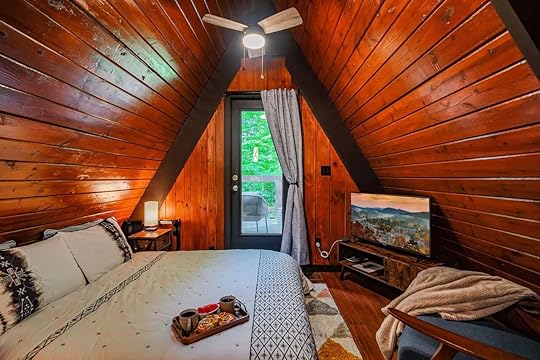 Photo: Airbnb
Photo: Airbnb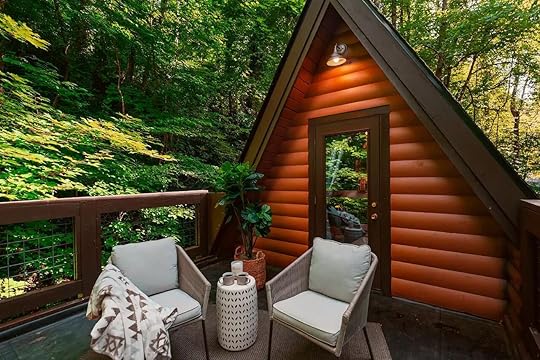 Photo: Airbnb
Photo: AirbnbSee more photosDon’t make the mistake of booking this Guest Favorite Airbnb for just one night, it’s somewhere you’ll want to linger. The master bedroom nests beneath the peak and the spiced-hued cladding makes the lounge especially cozy once dusk falls. It has a retro games room and a spacious deck for sipping Tennessee moonshine under the stars. Close to downtown, skiing, and trails, it’s a 10/10 across the board.
Six guests, two bedrooms
Price: $283 per night
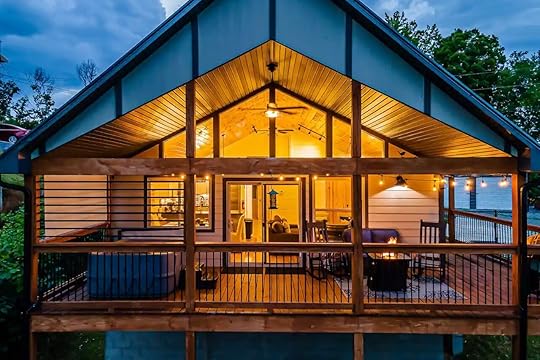 Photo: Airbnb
Photo: Airbnb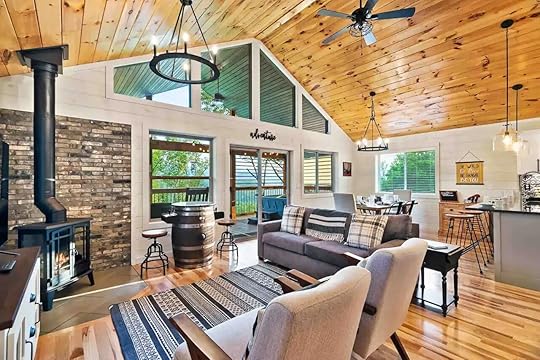 Photo: Airbnb
Photo: Airbnb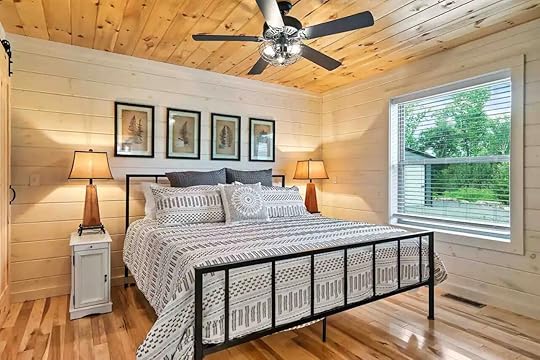 Photo: Airbnb
Photo: Airbnb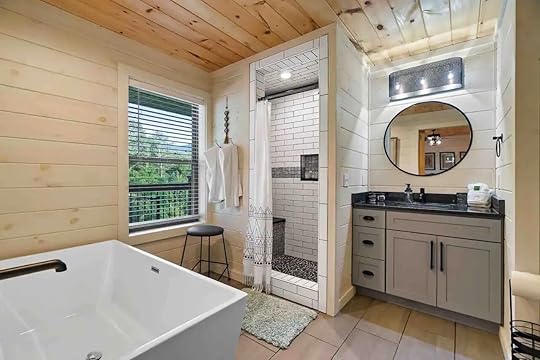 Photo: Airbnb
Photo: AirbnbSee more photosThis state-of-the-art cabin mingles sophisticated design with all the latest bells and whistles. A gleaming stainless steel kitchen, posh bathrooms, and ample living space take care of comfort while the whiskey barrel arcade game and mountain-view hot tub handle the entertainment. Attractions and distilleries are a few miles down the drive and black bears make regular jaunts through the backyard.
Six guests, two bedrooms
Price: $292 per night
These Gatlinburg treehouses put you up in the air with great views of the surrounding forestry. Enjoy hot tubs, wraparound decks, and loft bedrooms from which to take in those striking views.
The Whimsical Treehouse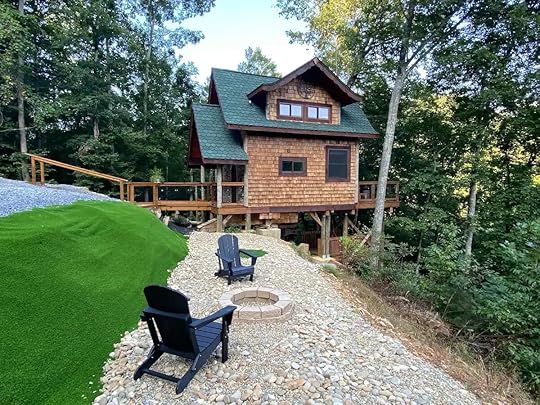 Photo: Airbnb
Photo: Airbnb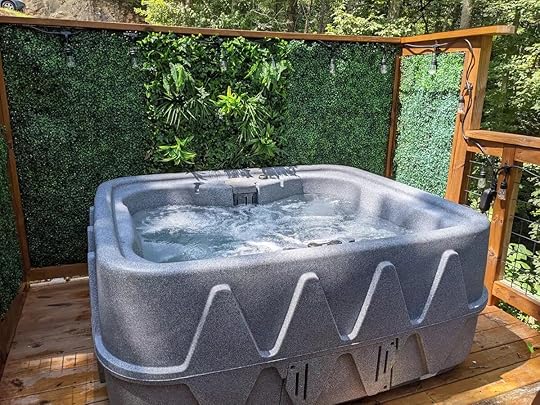 Photo: Airbnb
Photo: Airbnb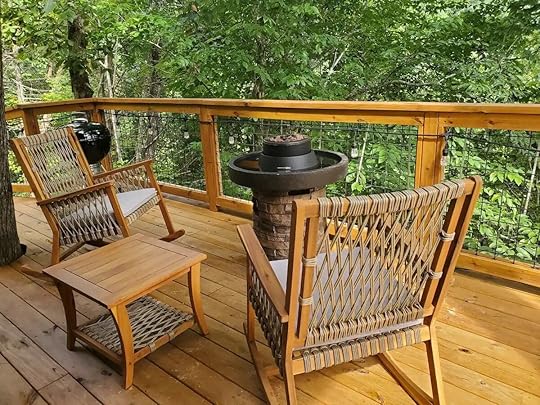 Photo: Airbnb
Photo: Airbnb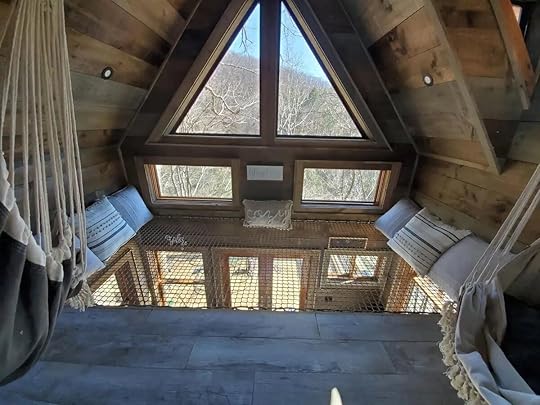 Photo: Airbnb
Photo: AirbnbSee more photos
Embrace hygge at this handcrafted treehouse overlooking the Little Pigeon River. The space consists of a sleeping den kitted out with a bed, his and hers hammock chairs, and a netted relaxation area that peers over the woodland. With a secluded setting a short drive out of town, a fire pit, and private hot tub surrounded by greenery this is perhaps the most romantic Airbnb Gatlinburg proffers.
Four guests, one bedroom
Price: $400 per night
Life is better when you go small. These Gatlinburg tiny houses on Airbnb are big on adventure, but tiny on size.
Dome at Smoky Mountains Glamping Photo: Airbnb
Photo: Airbnb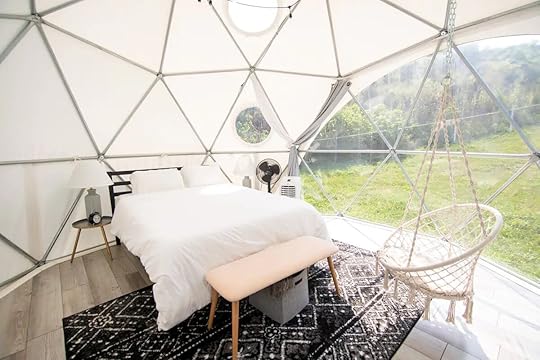 Photo: Airbnb
Photo: Airbnb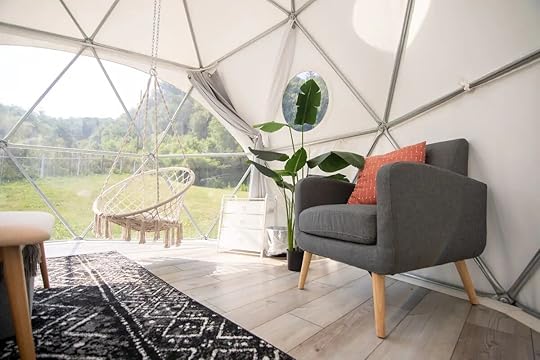 Photo: Airbnb
Photo: Airbnb Photo: Airbnb
Photo: AirbnbSee more photos
Get back to nature with a night at one of these eco-luxe domes – there are four available plus a tiny house with a kitchenette. Set upon a 140-acre patch of farmland, there is a fire pit, kitchen, outdoor shower, and flushable toilets on-site to share with other guests. Kick back on your personal porch during the day before settling down for a night of stargazing from the bed. Dogs are welcome at this pet-friendly Airbnb in Gatlinburg, TN.
Two guests, one bedroom
Price: $110 per night
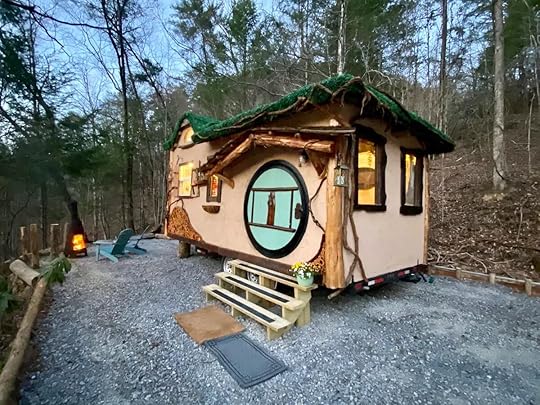 Photo: Airbnb
Photo: Airbnb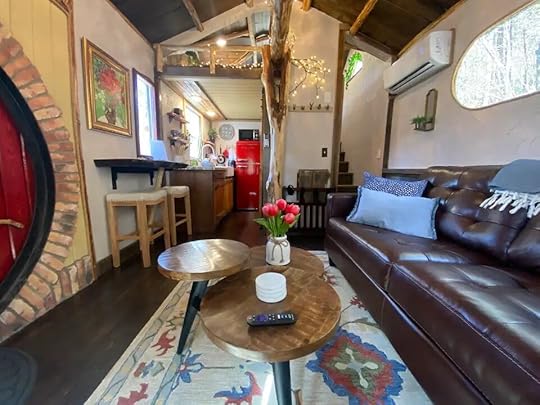 Photo: Airbnb
Photo: Airbnb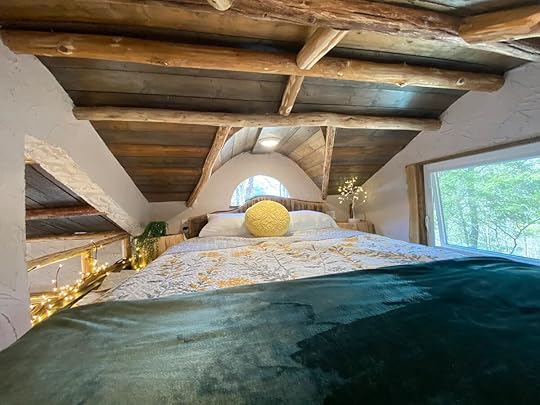 Photo: Airbnb
Photo: Airbnb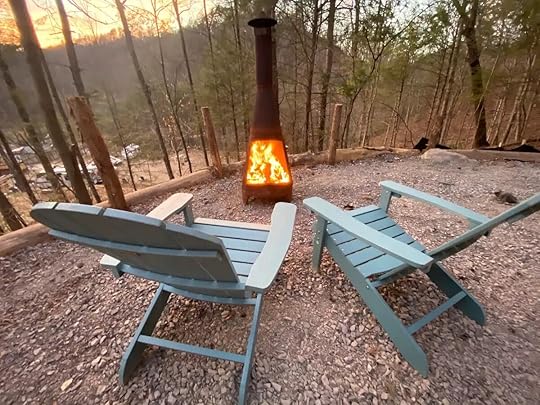 Photo: Airbnb
Photo: AirbnbSee more photos
Inspired by Bag End, this tiny house in Gatlinburg, TN, on Airbnb will go down a storm with Tolkein fans. Step through the round doorway into your open-plan living space that fuses rural charms with modern conveniences. A snug bedroom slots into the mezzanine and you have a fully functioning bathroom below. Your backyard is fitted with a firepit emblazoned with Elvish script. Dogs are welcome at this pet-friendly woodland retreat.
Four guests, one bedroom
Price: $130 per night
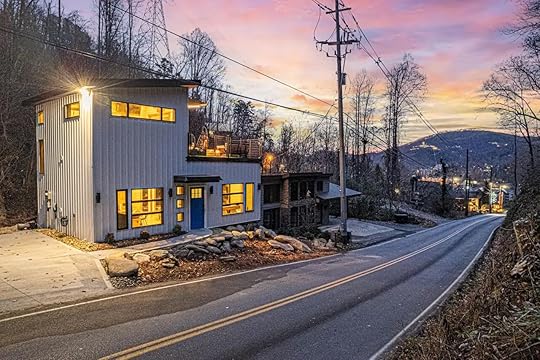 Photo: Airbnb
Photo: Airbnb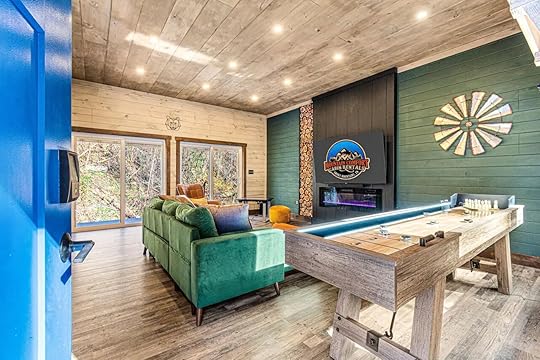 Photo: Airbnb
Photo: Airbnb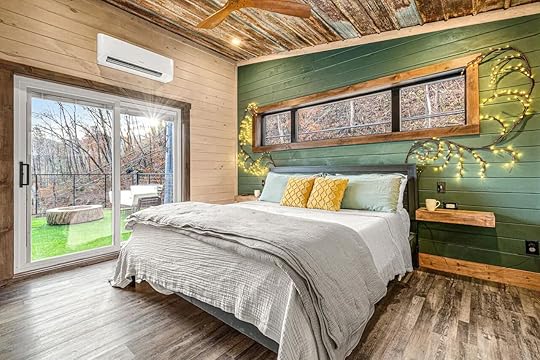 Photo: Airbnb
Photo: Airbnb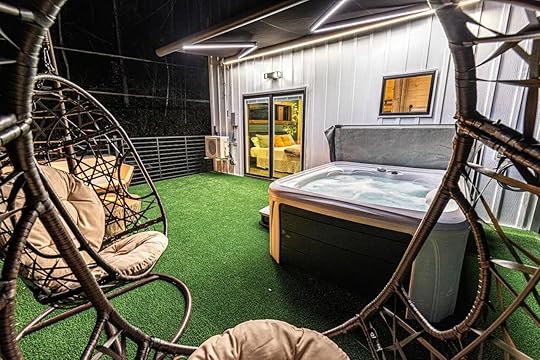 Photo: Airbnb
Photo: AirbnbSee more photosThis larger-than-it-looks tiny house in Gatlinburg will bowl you over: it has a mini bowling arcade and a coffee station that puts Starbucks to shame. The kitchen is so well-stocked you’ll feel guilty about dining out. Head upstairs to the whimsical bedroom, en suite bedroom with a jetted shower, and a terrace den with a hot tub and fire pit. It’s awesome for a couple or small family.
Four guests, one bedroom
Price: $271 per night
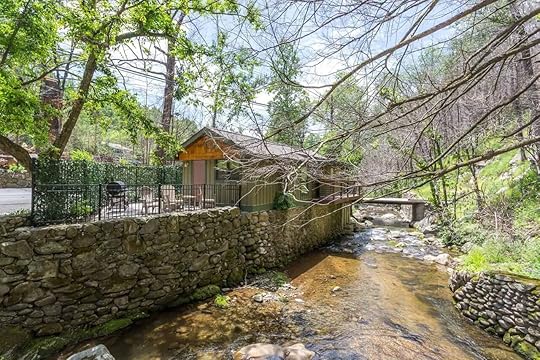 Photo: Airbnb
Photo: Airbnb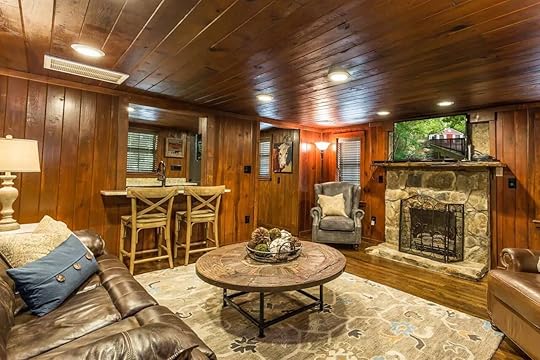 Photo: Airbnb
Photo: Airbnb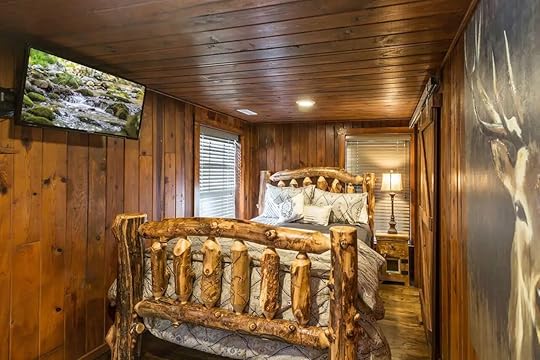 Photo: Airbnb
Photo: Airbnb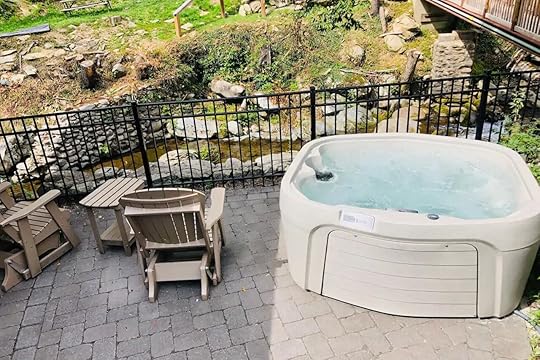 Photo: Airbnb
Photo: AirbnbSee more photosFlexible to accommodate lone adventurers, couples, and small families, this tiny house Airbnb near downtown Gatlinburg dates to 1930. It has a private hot tub and patio overlooking the Roaring Fork Stream. The rustic decor is homely and all amenities are accounted for including laundry facilities. It’s only a pity that Tennessee whiskey barrel sink doesn’t contain any liquor.
Four guests, one bedroom
Price: $210 per night
Matador Network's Blog
- Matador Network's profile
- 6 followers



